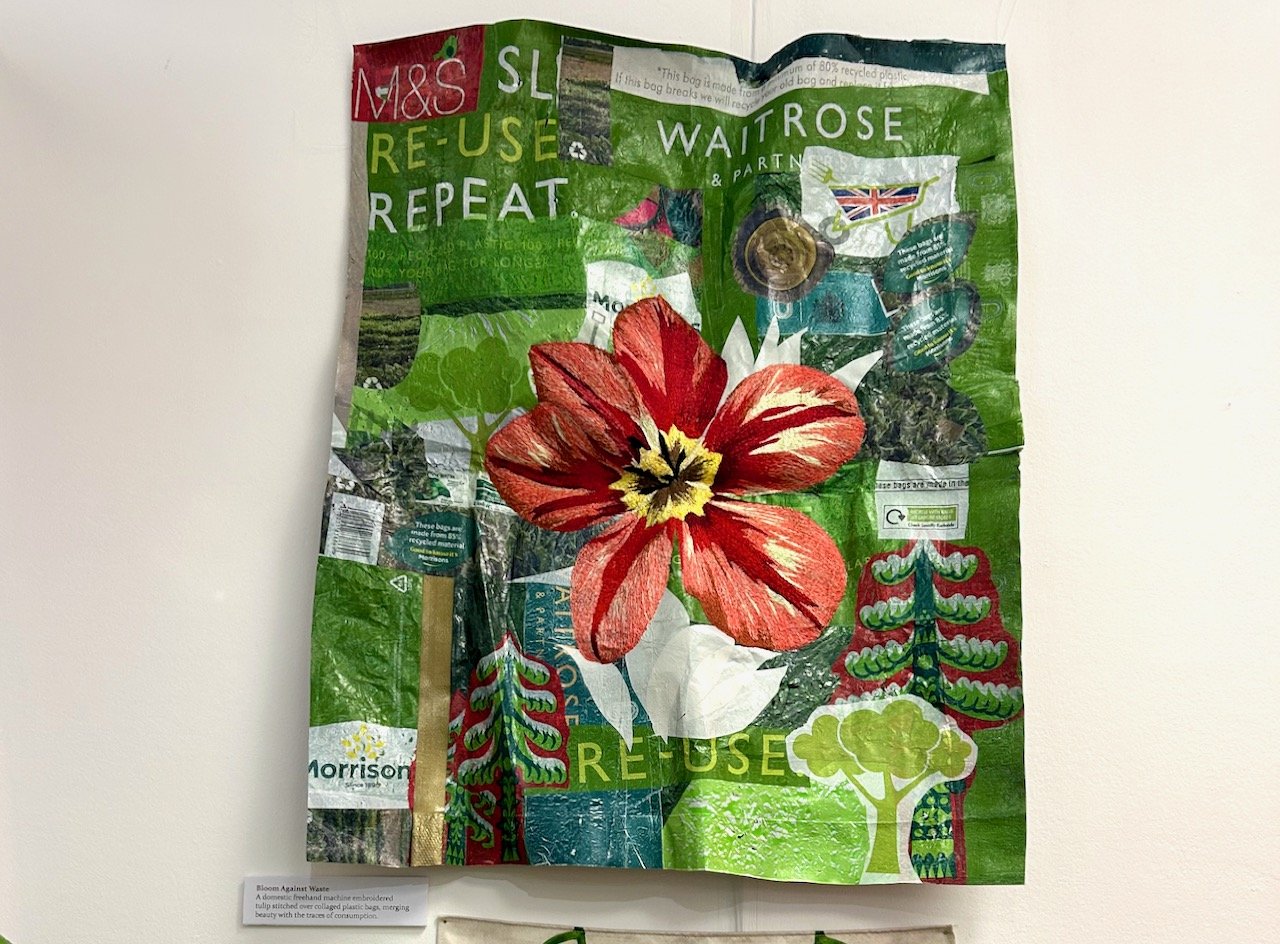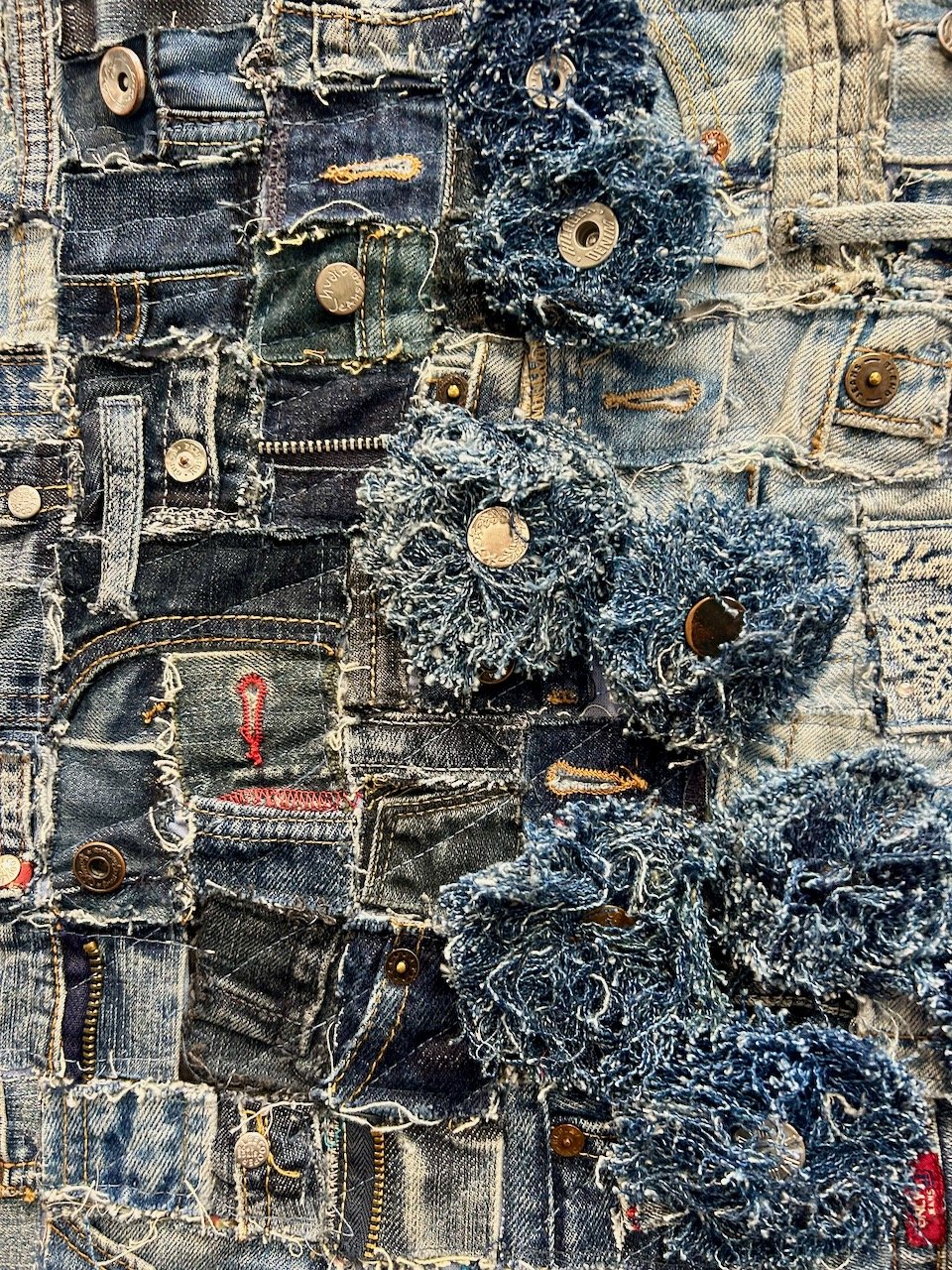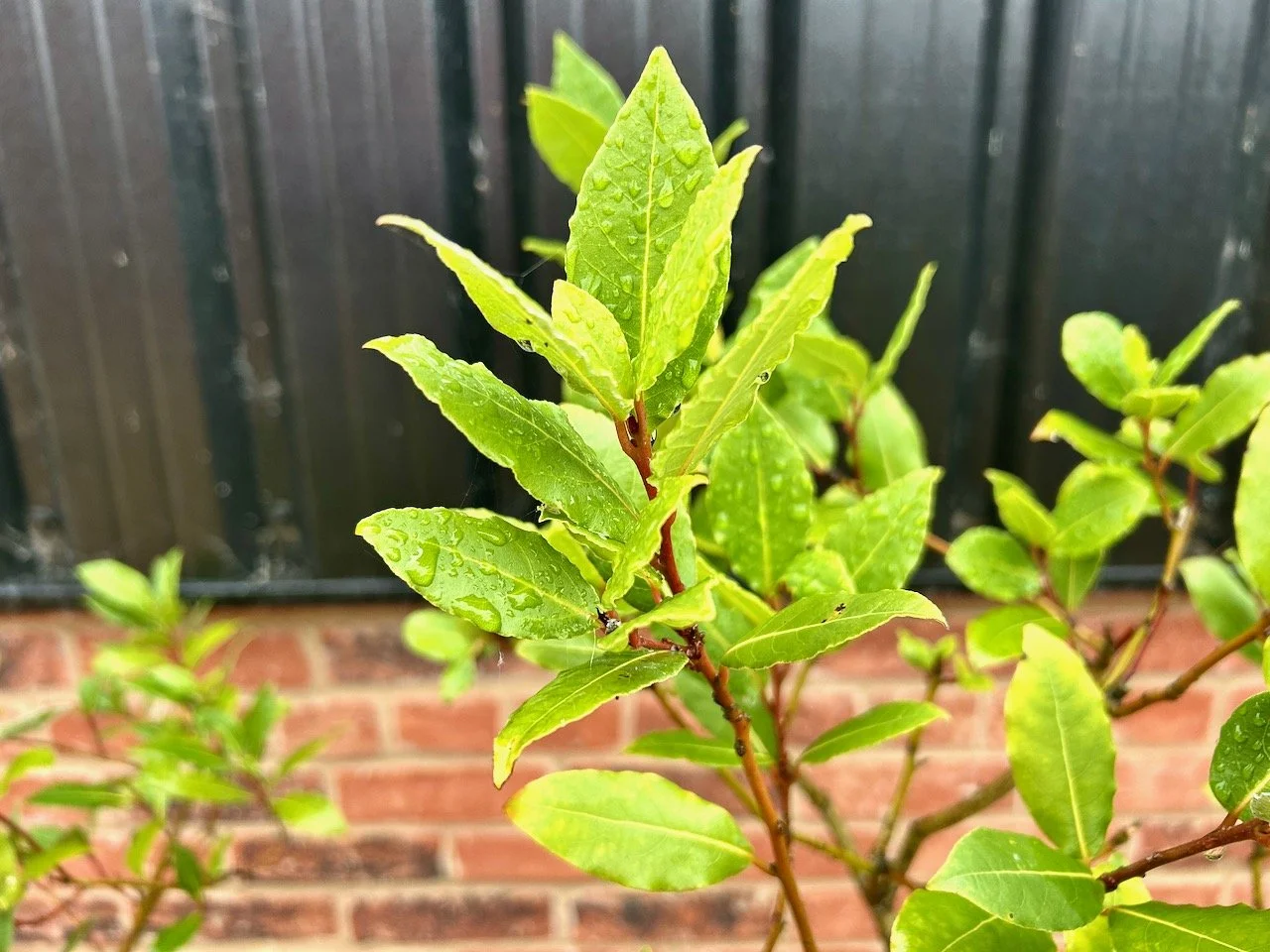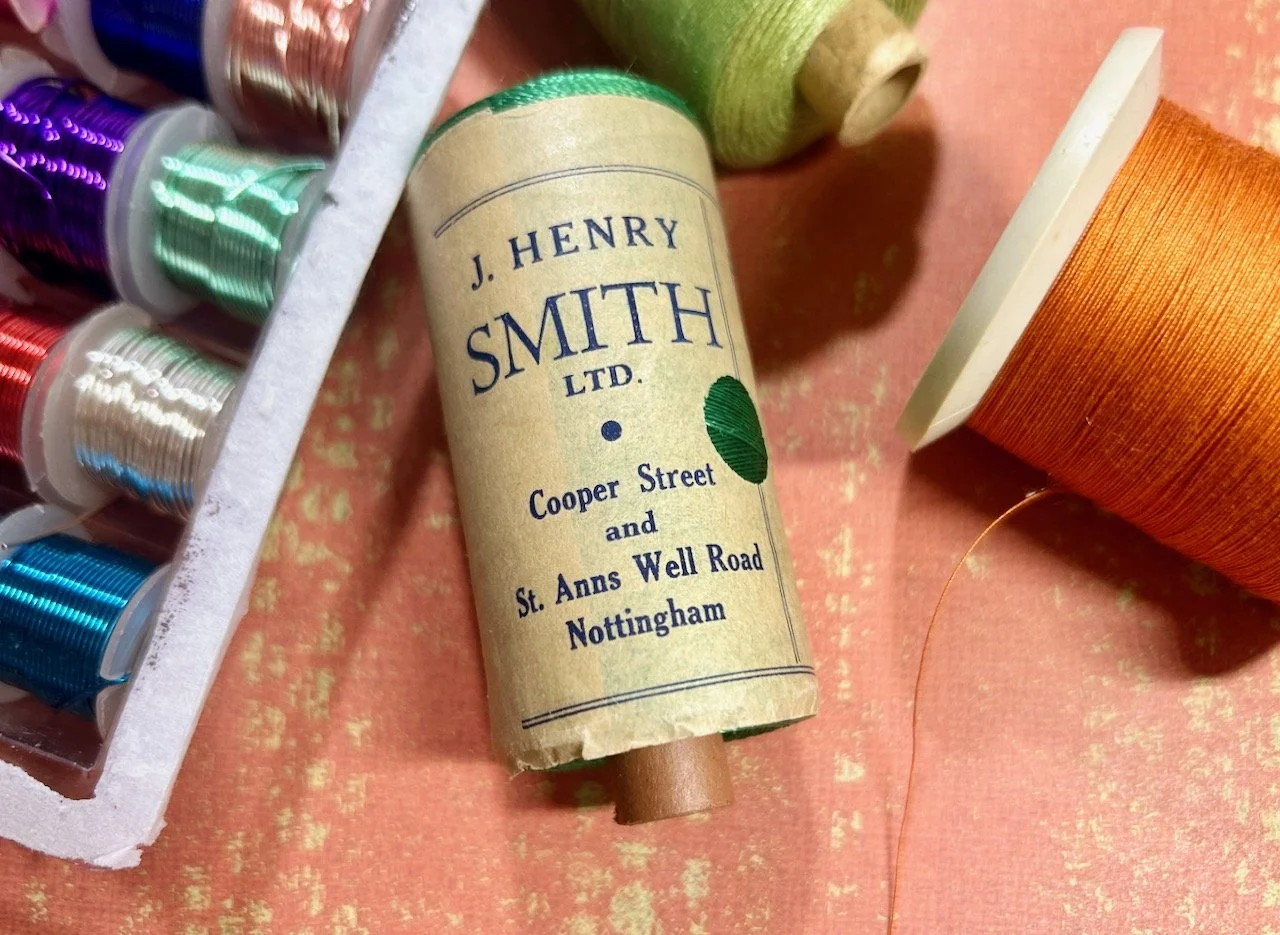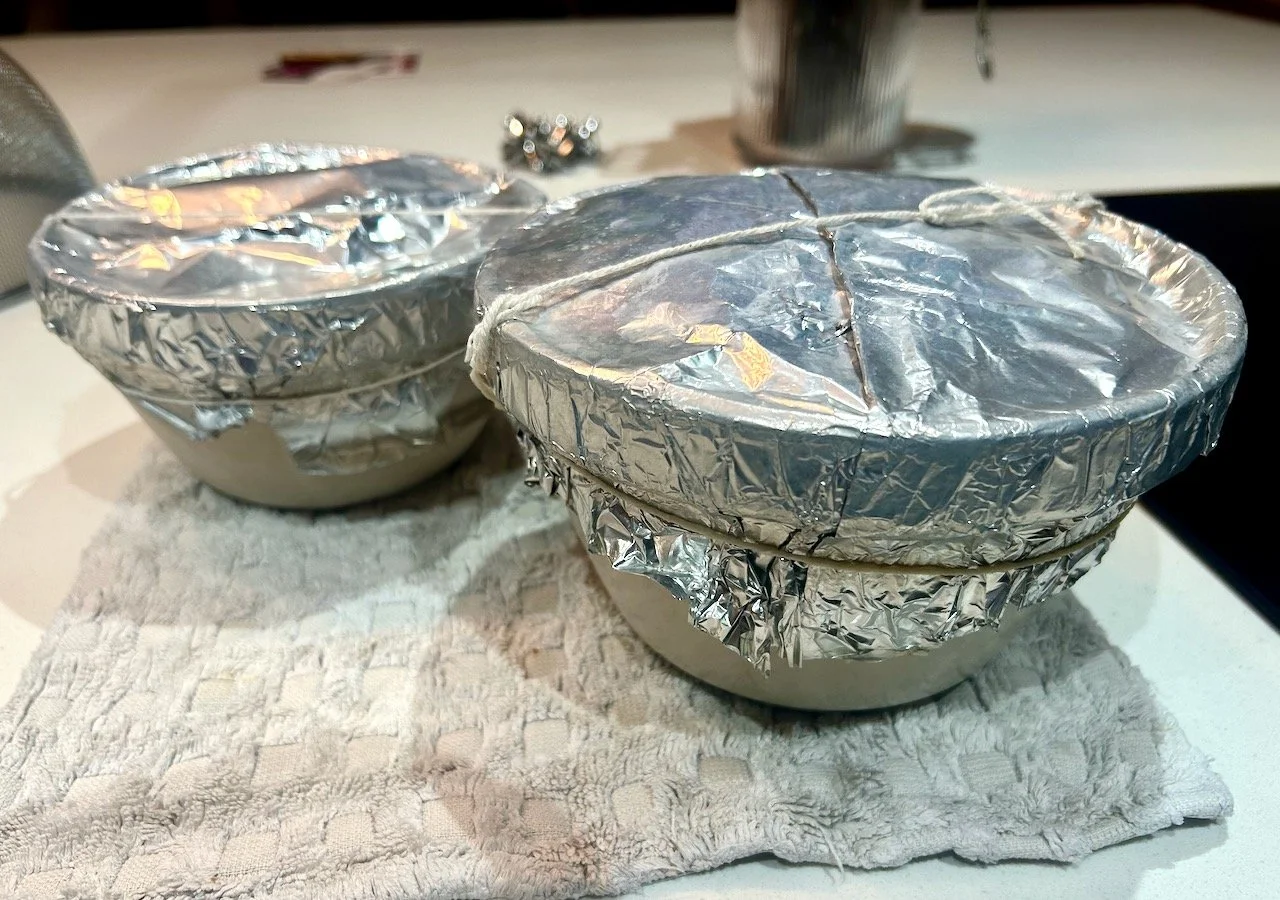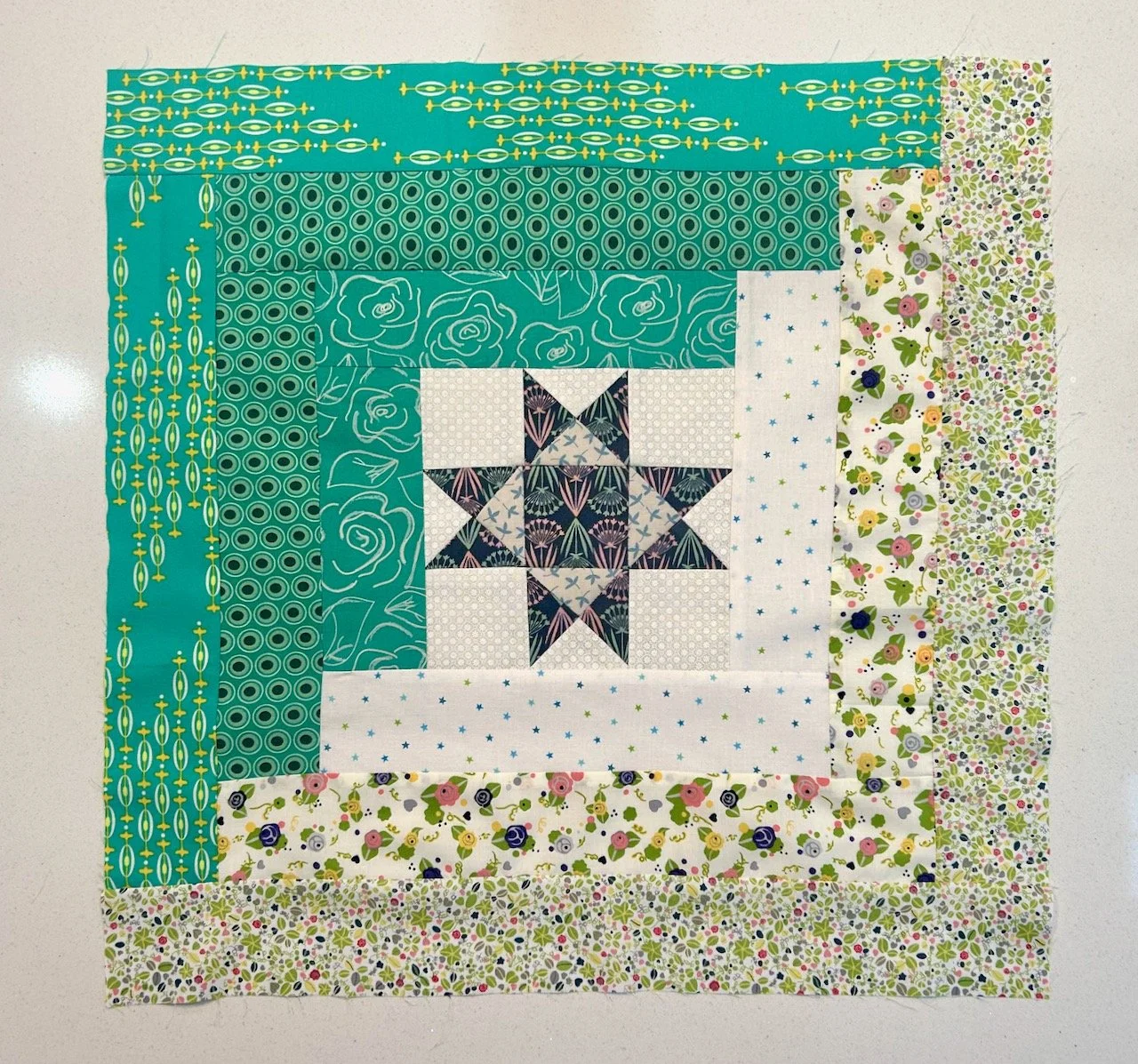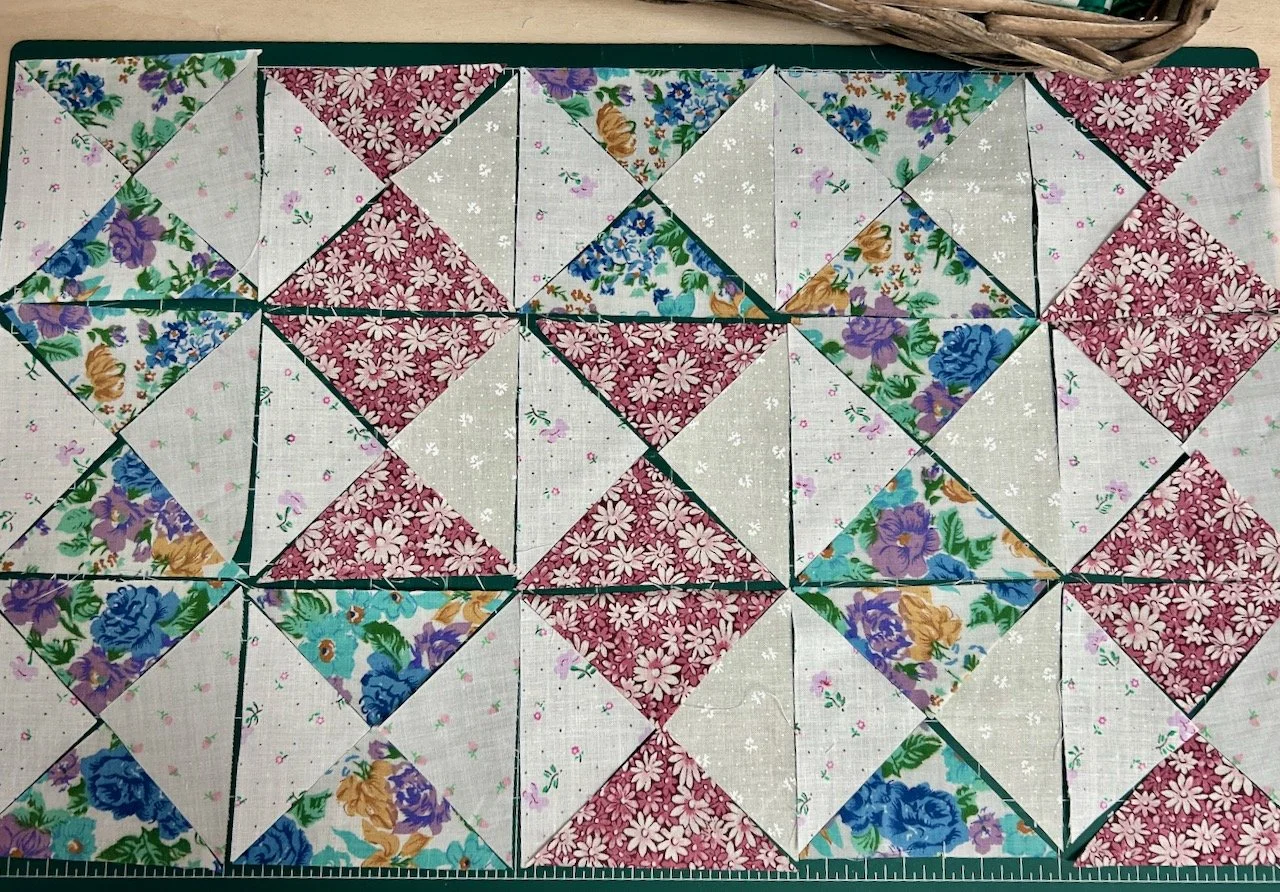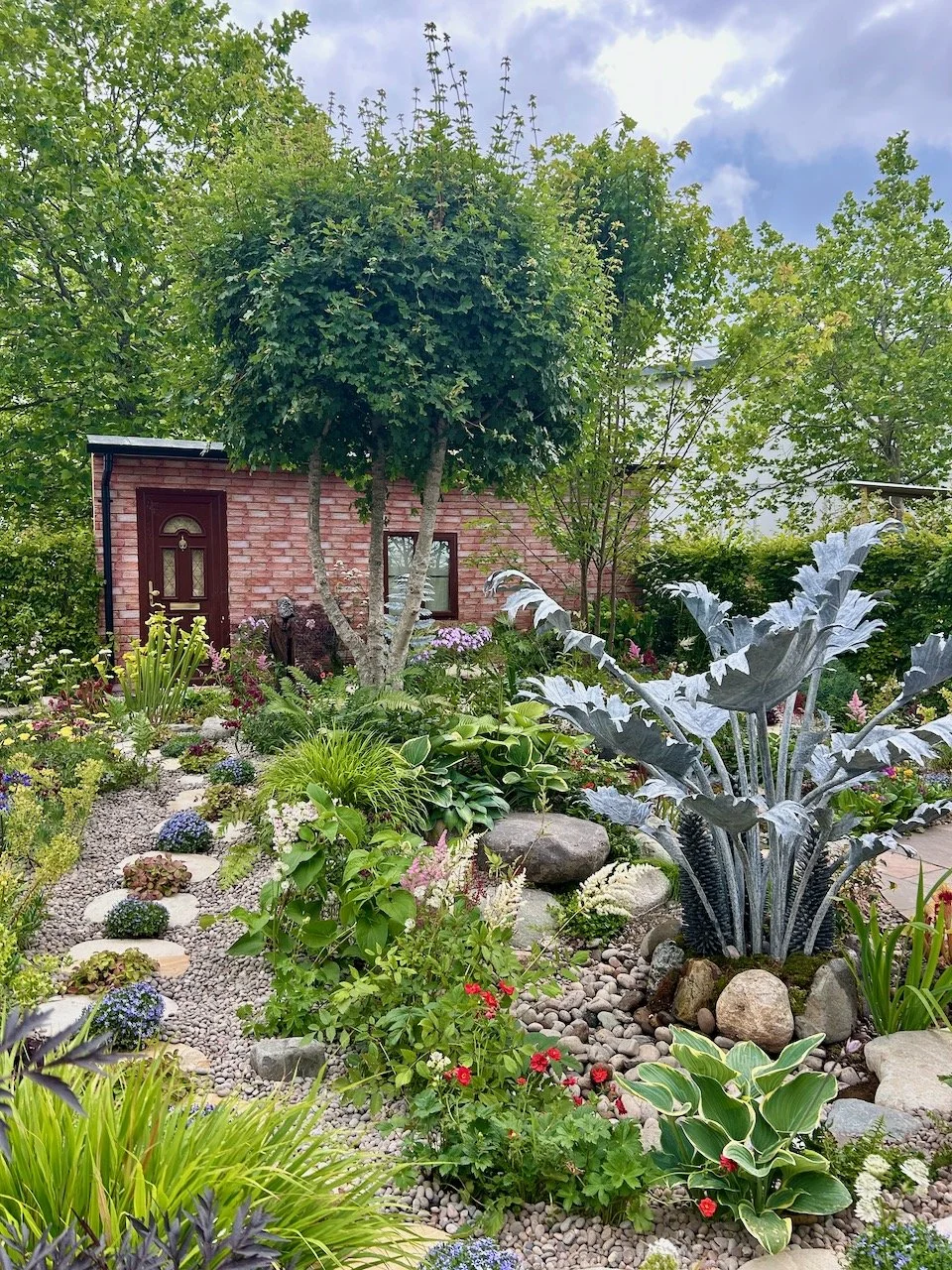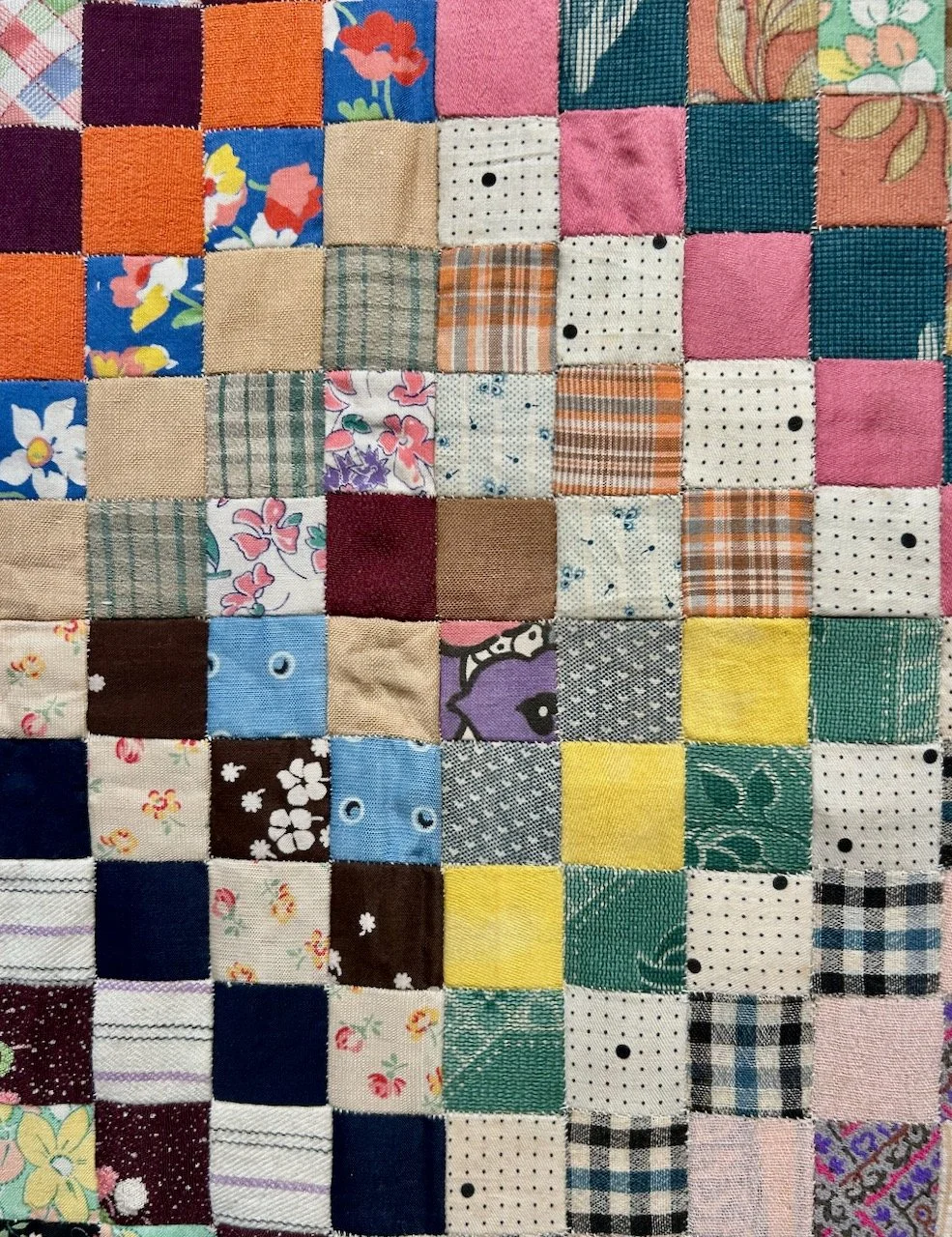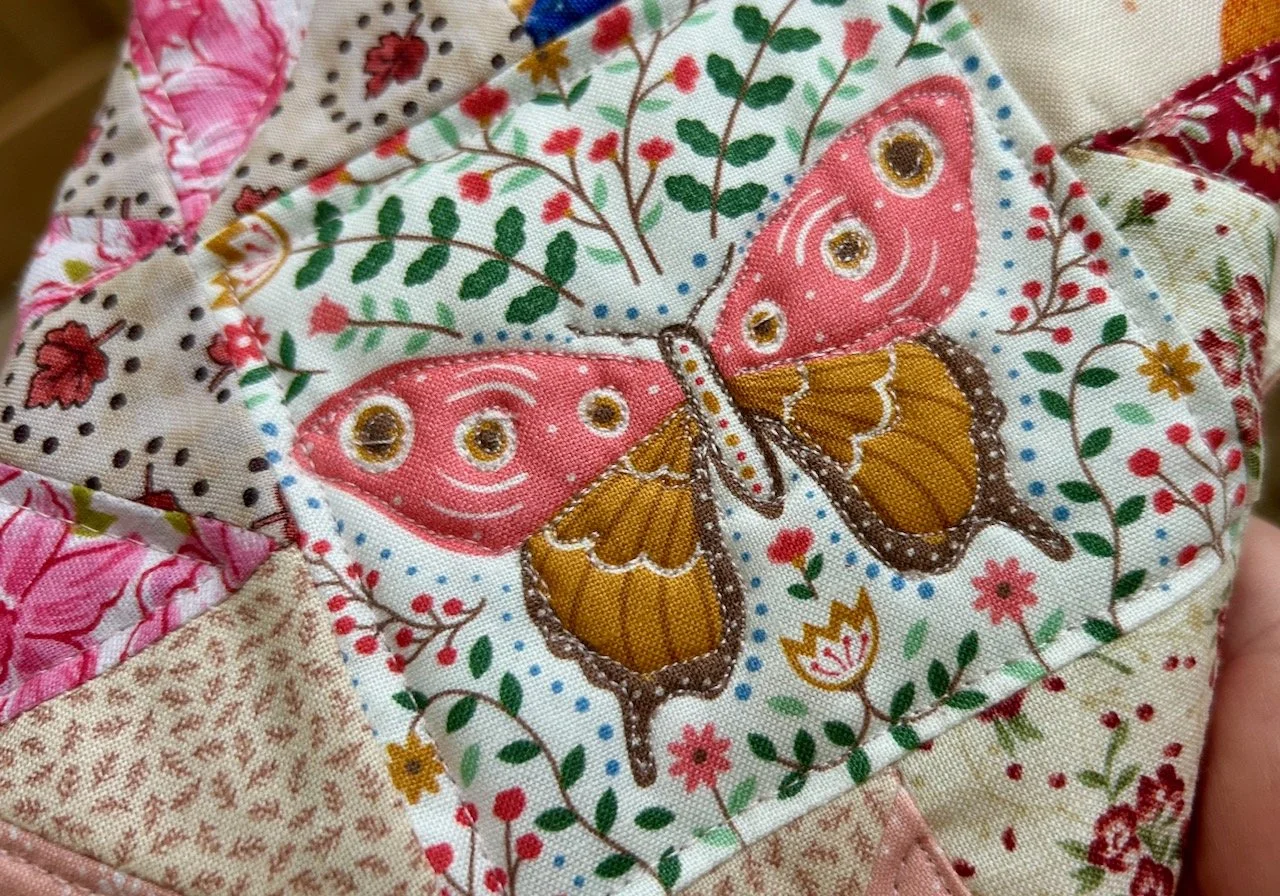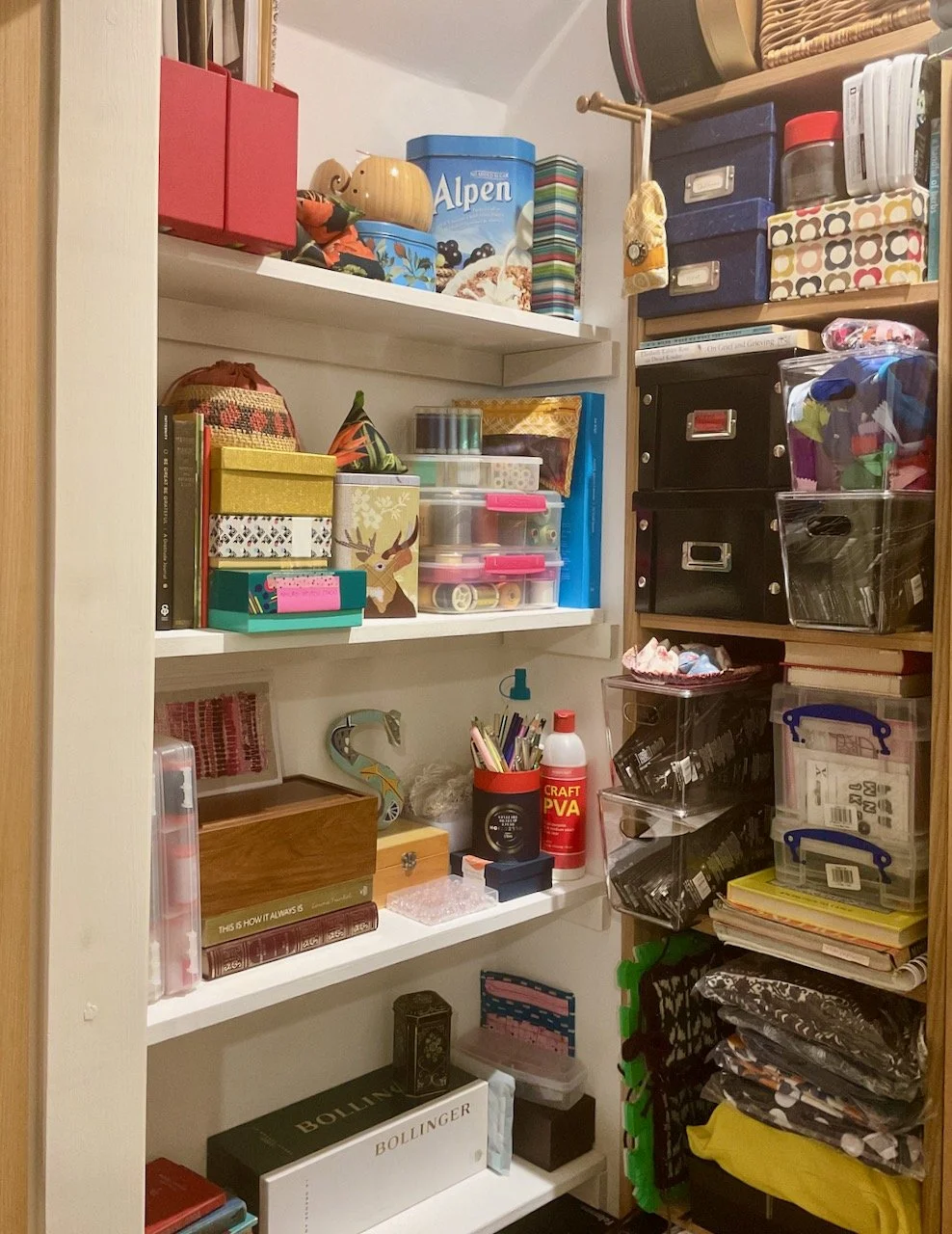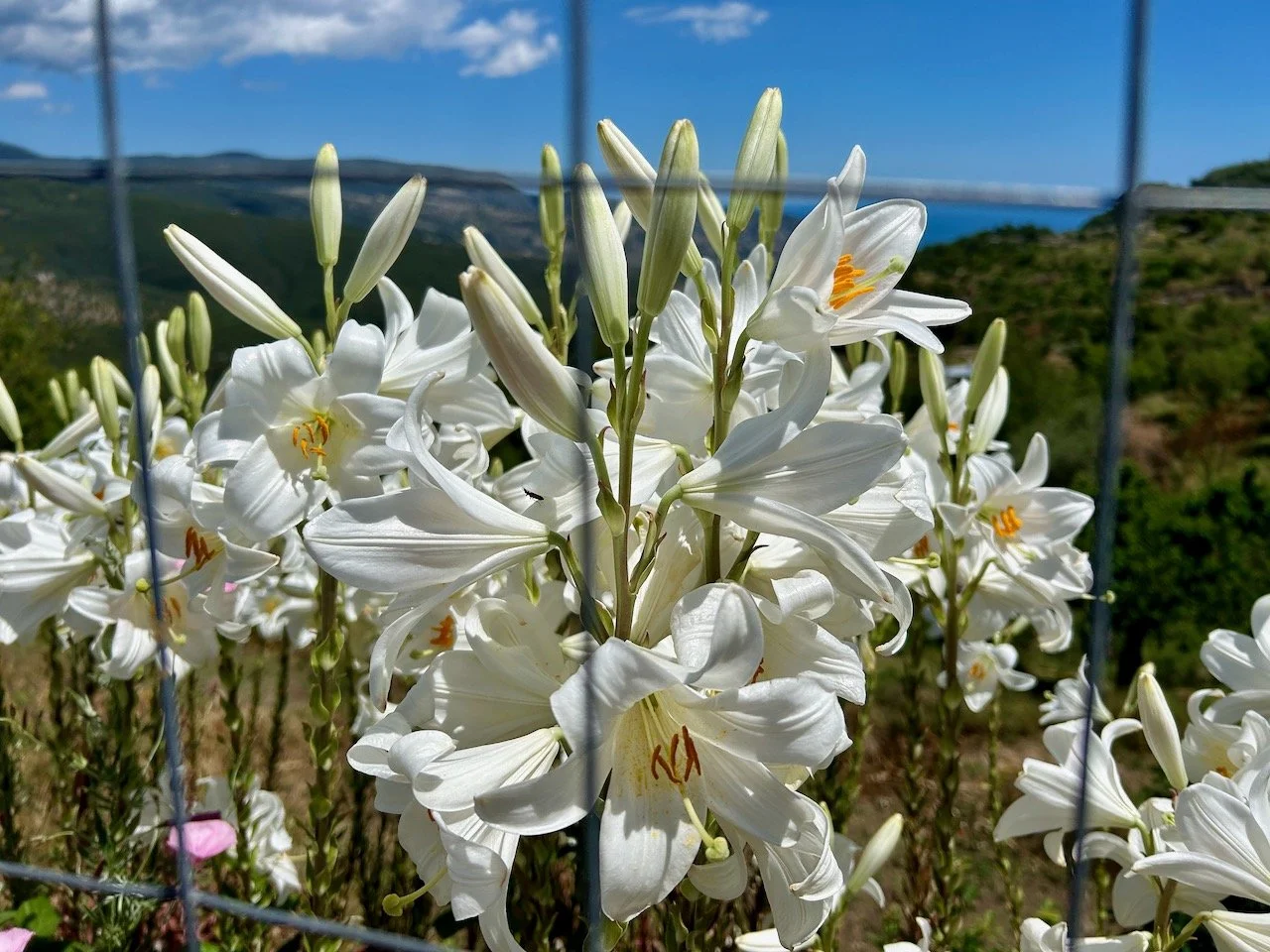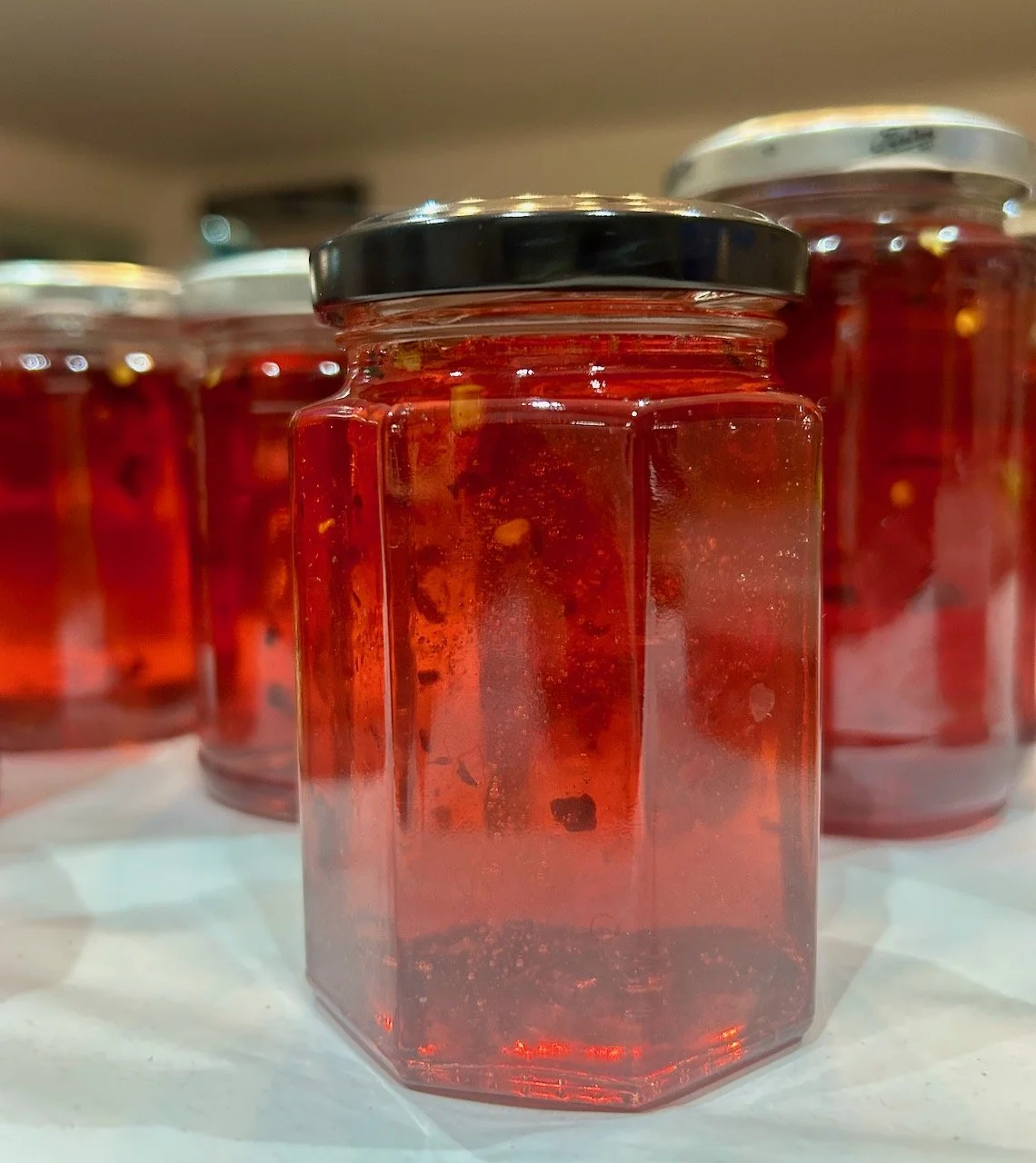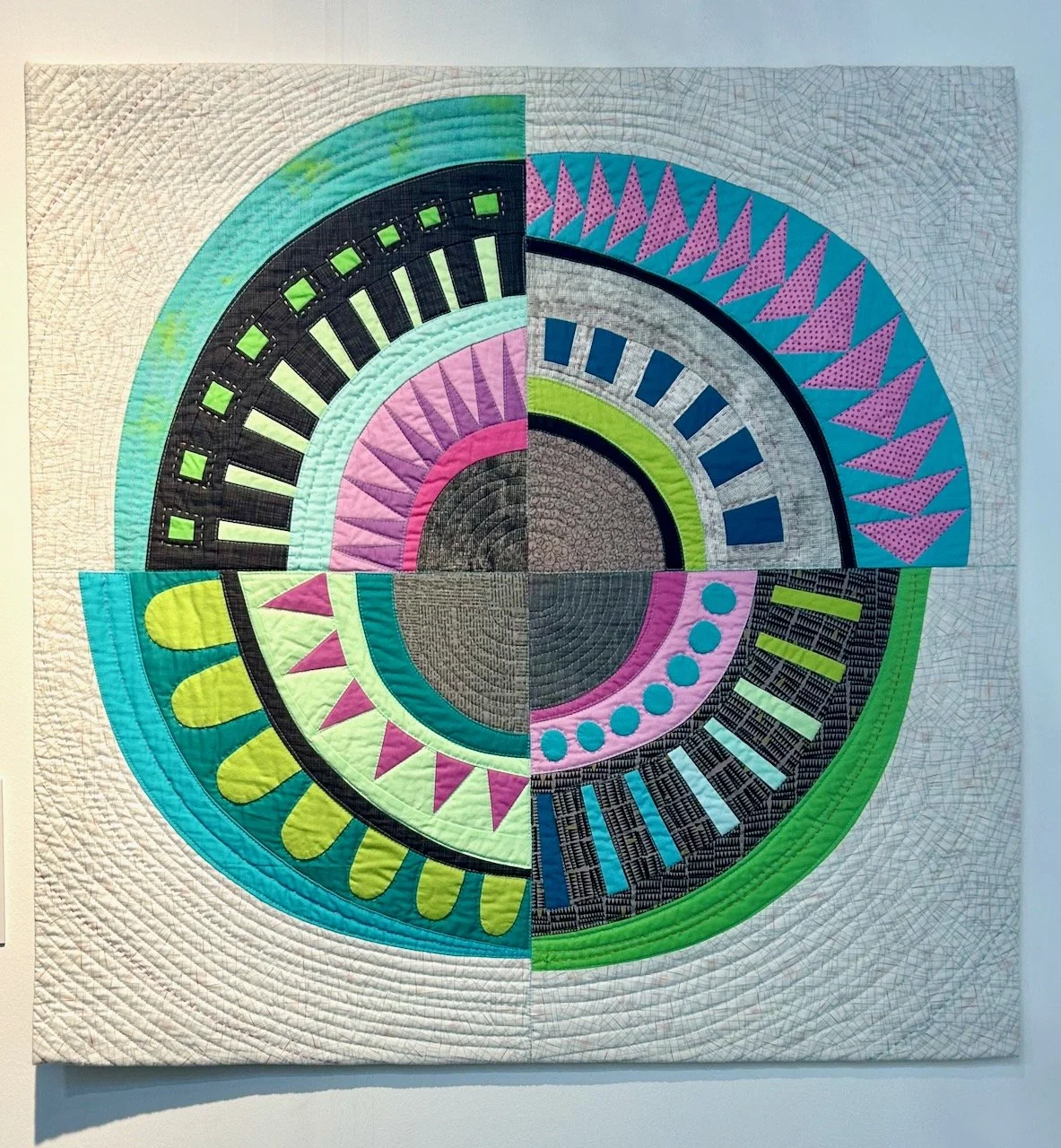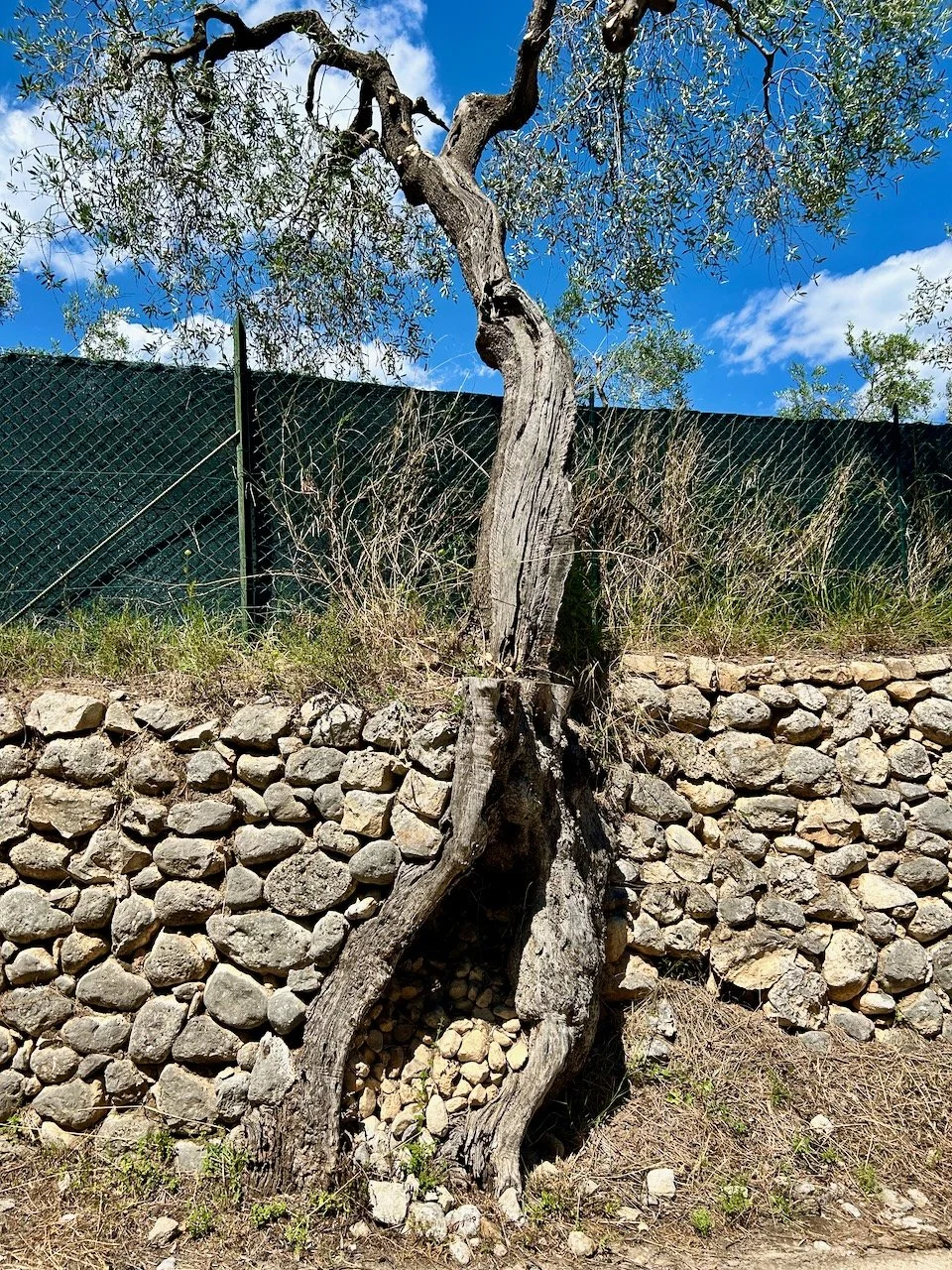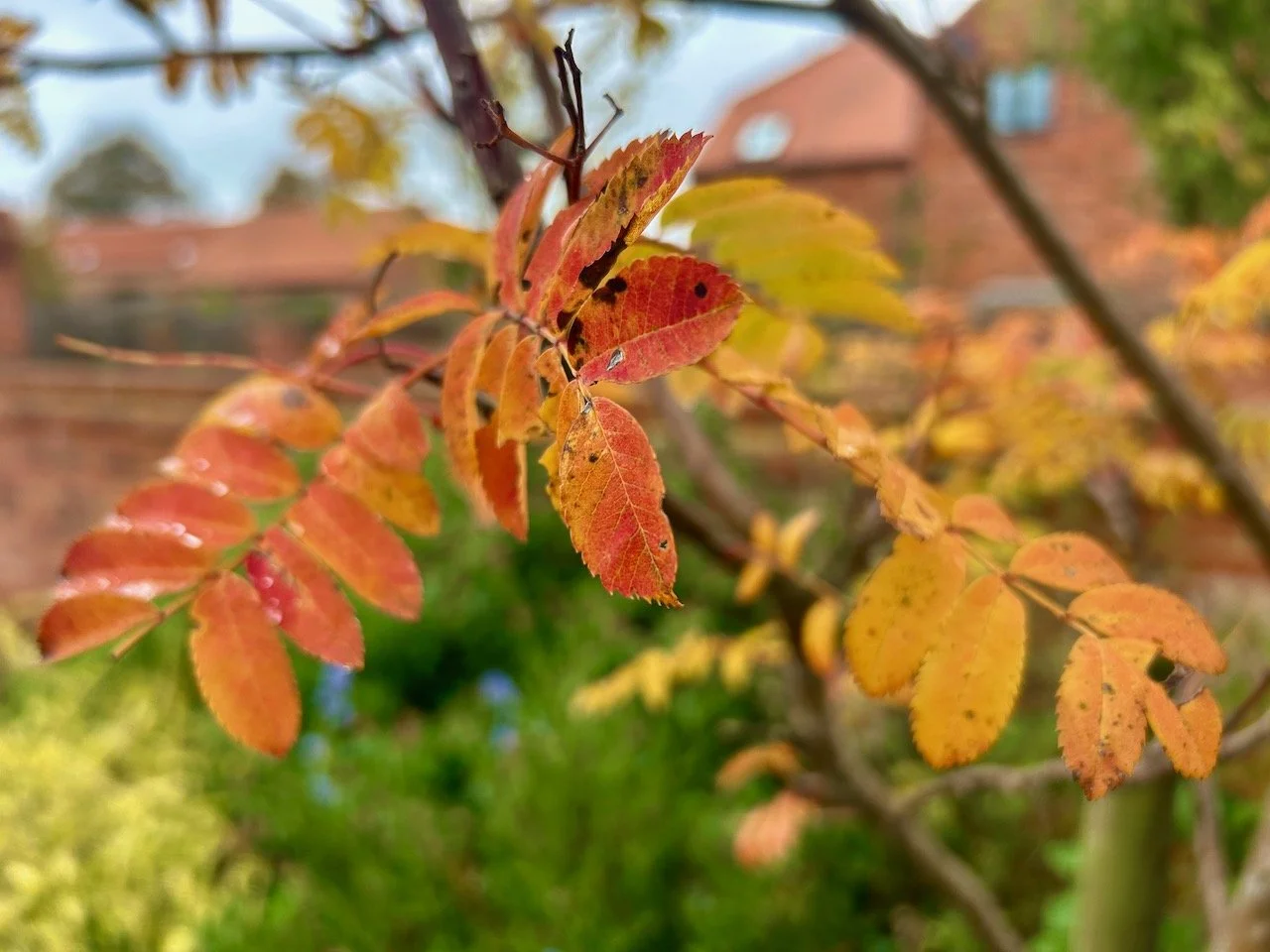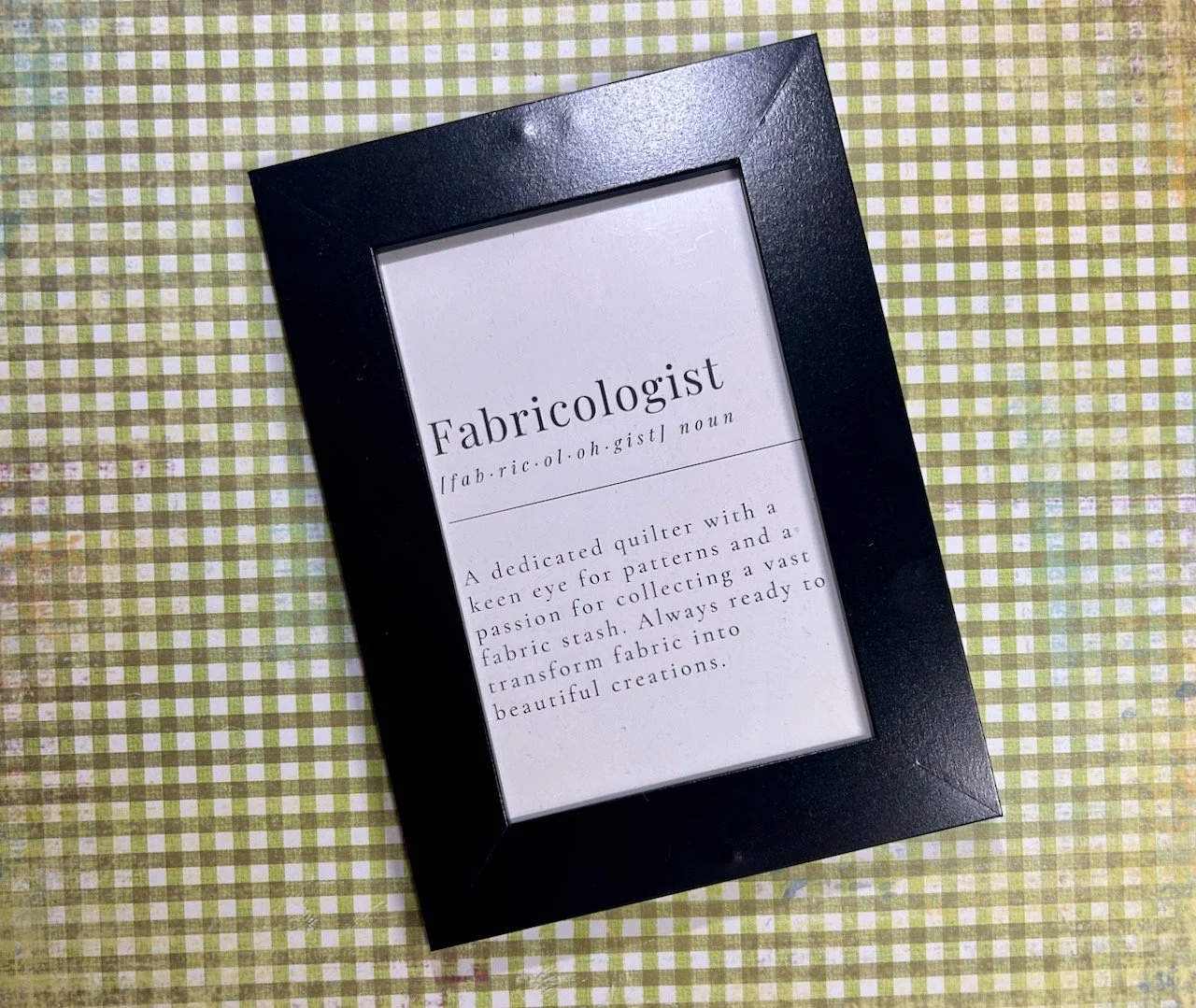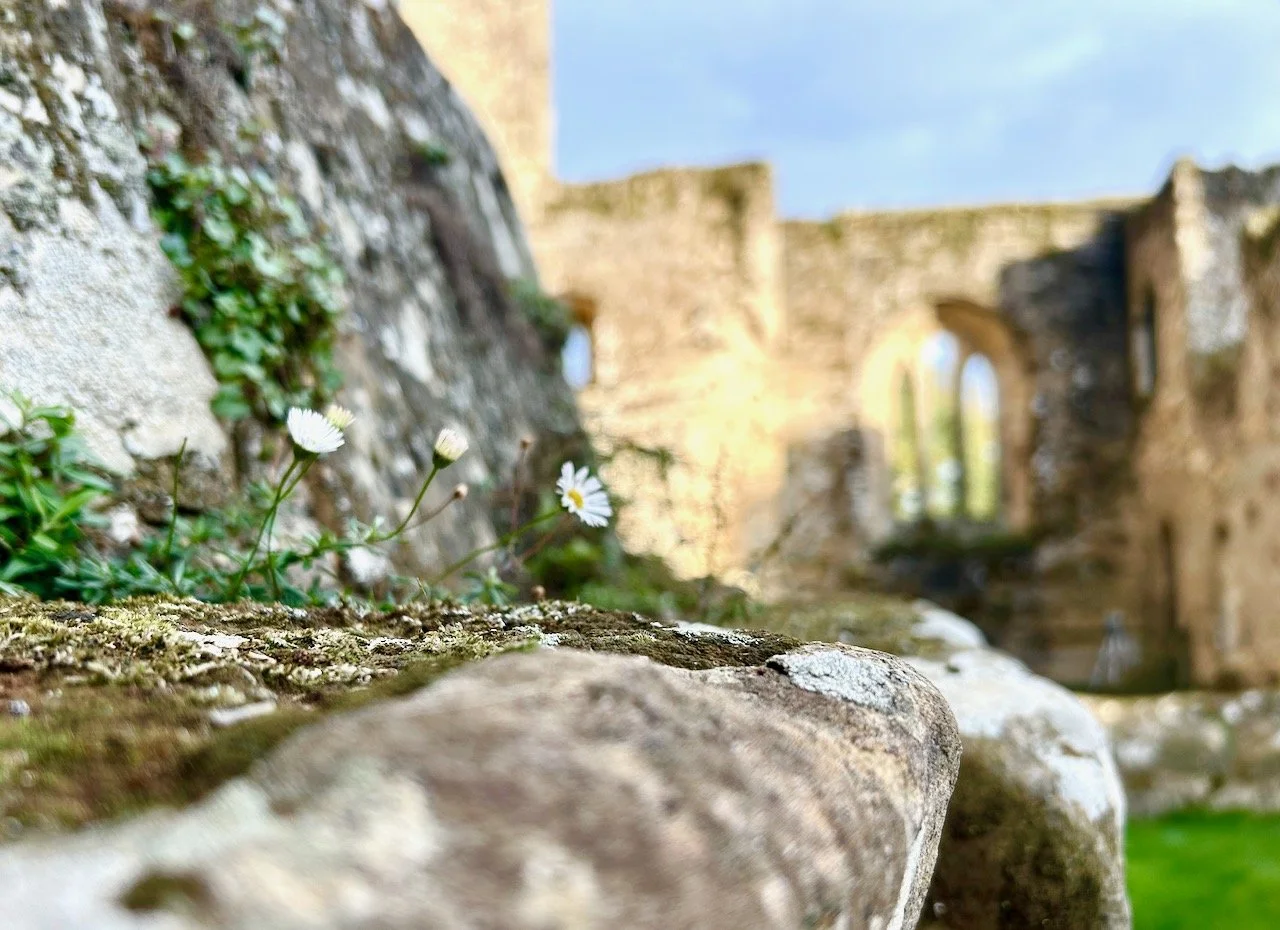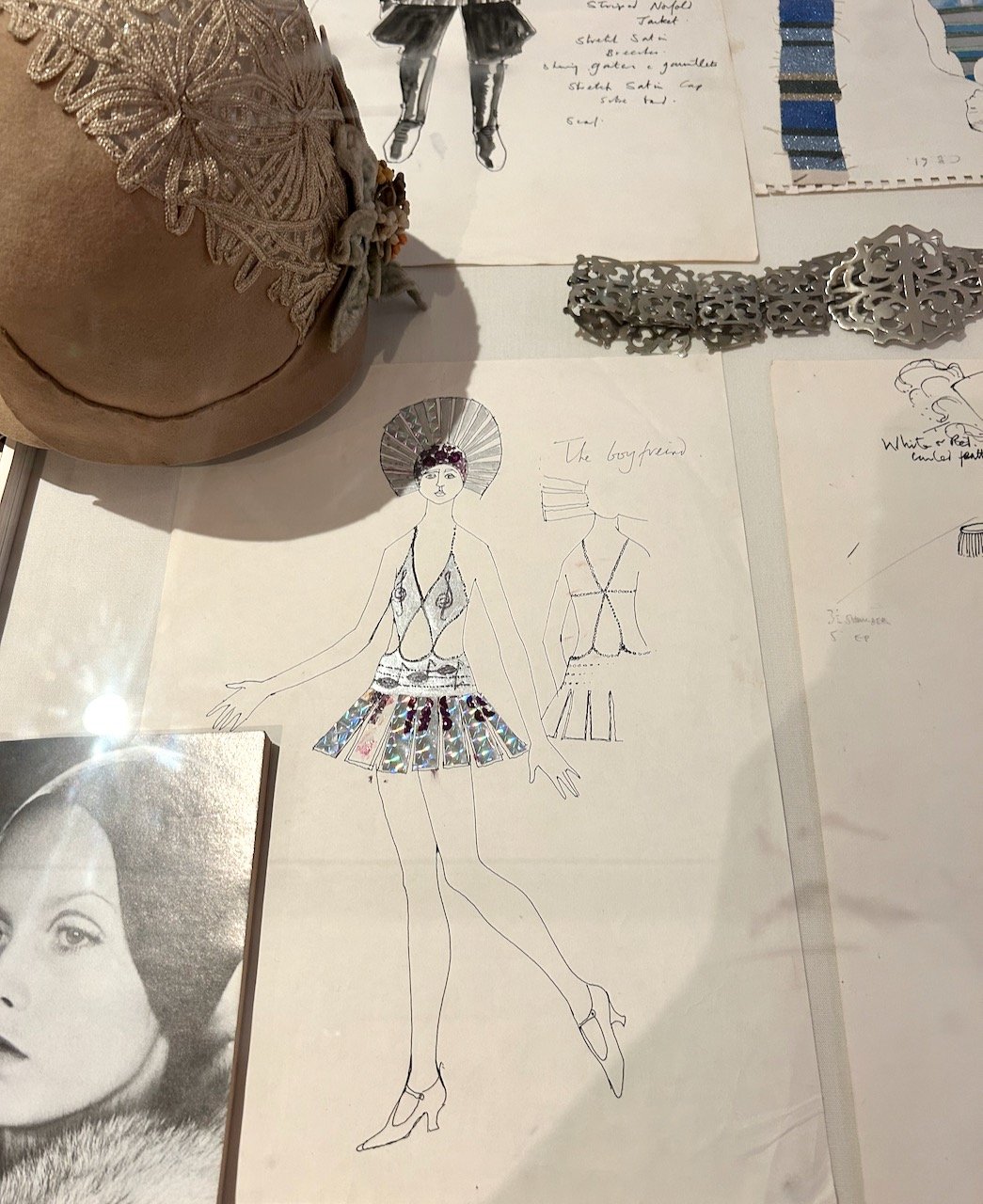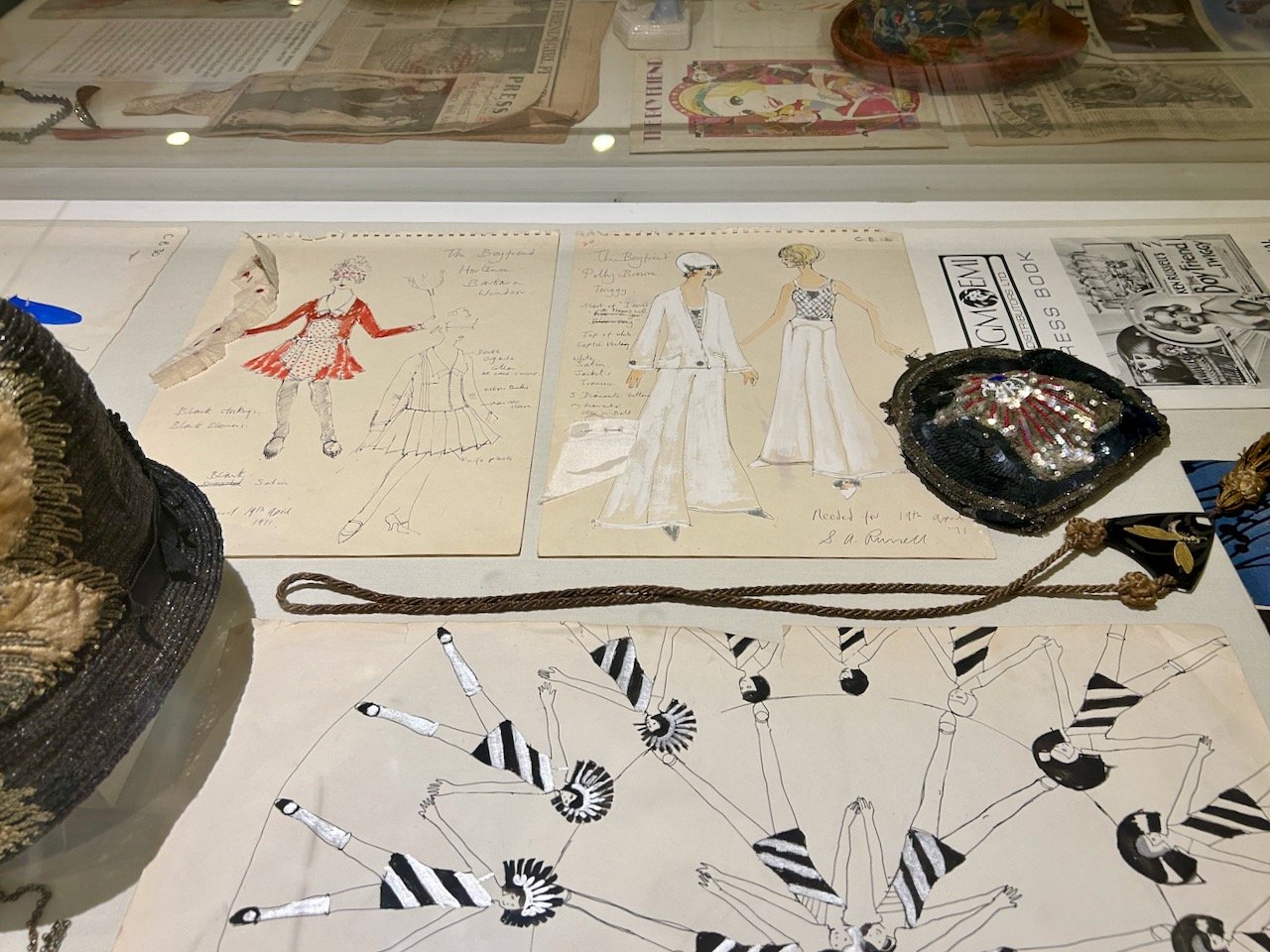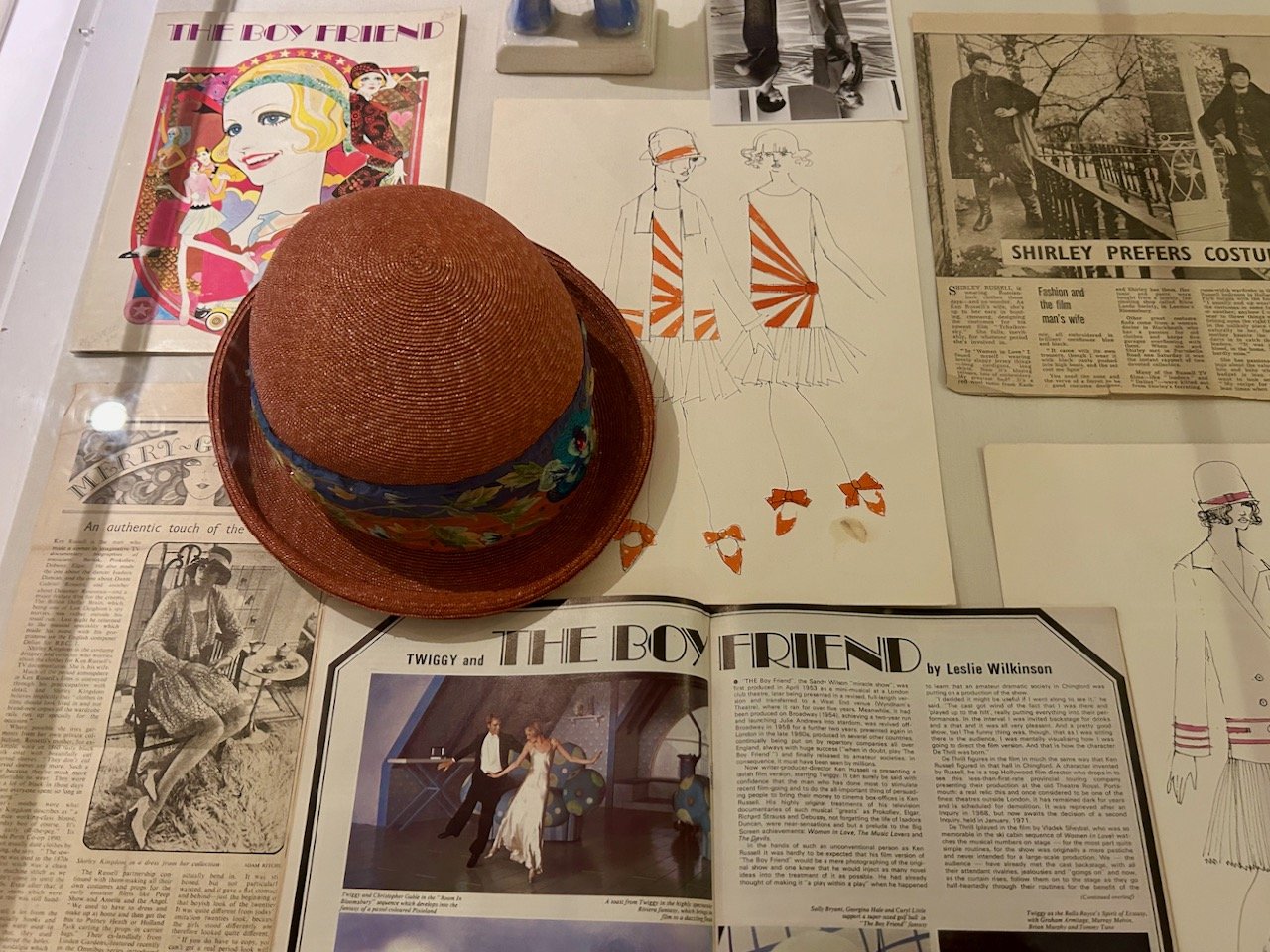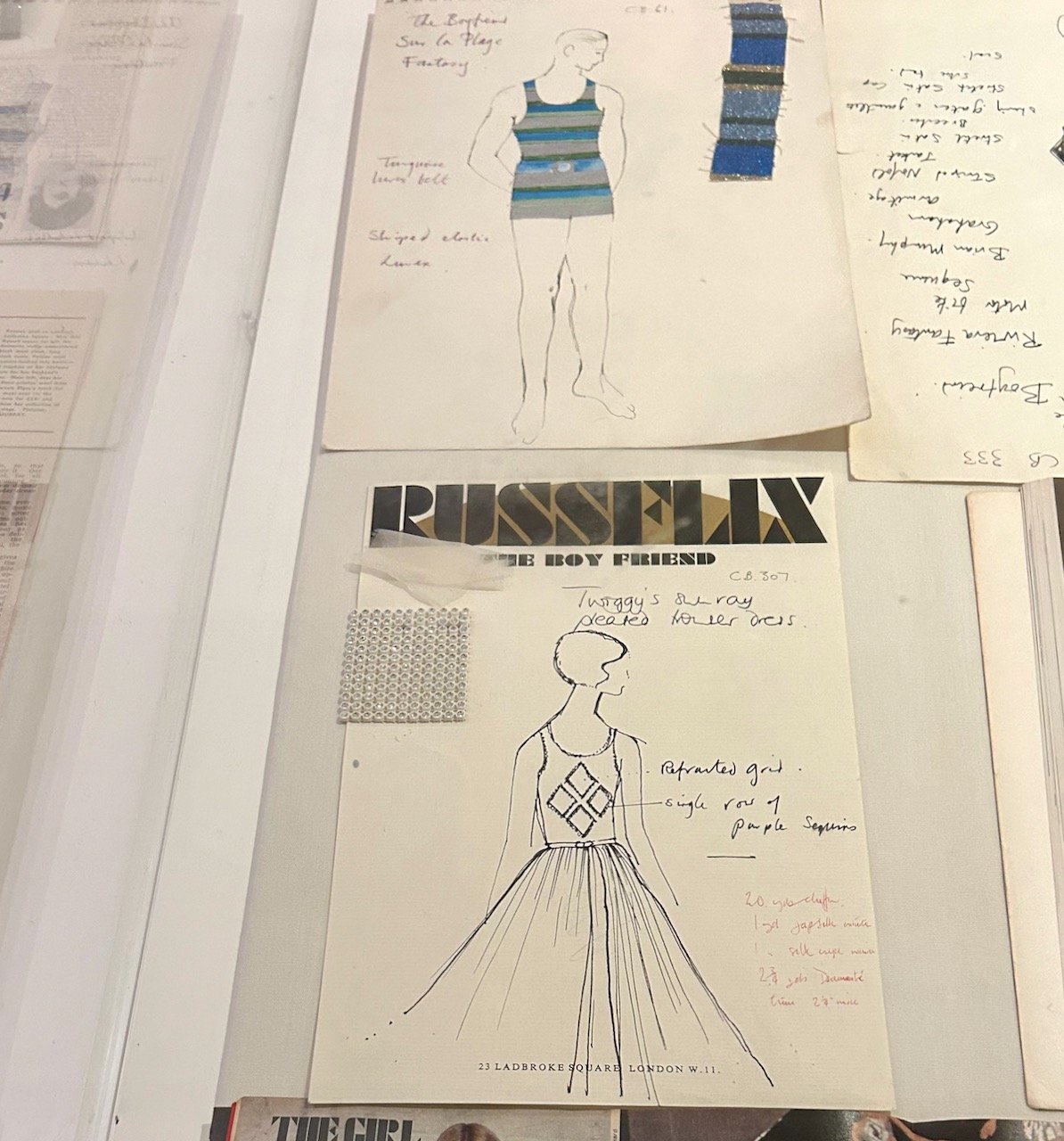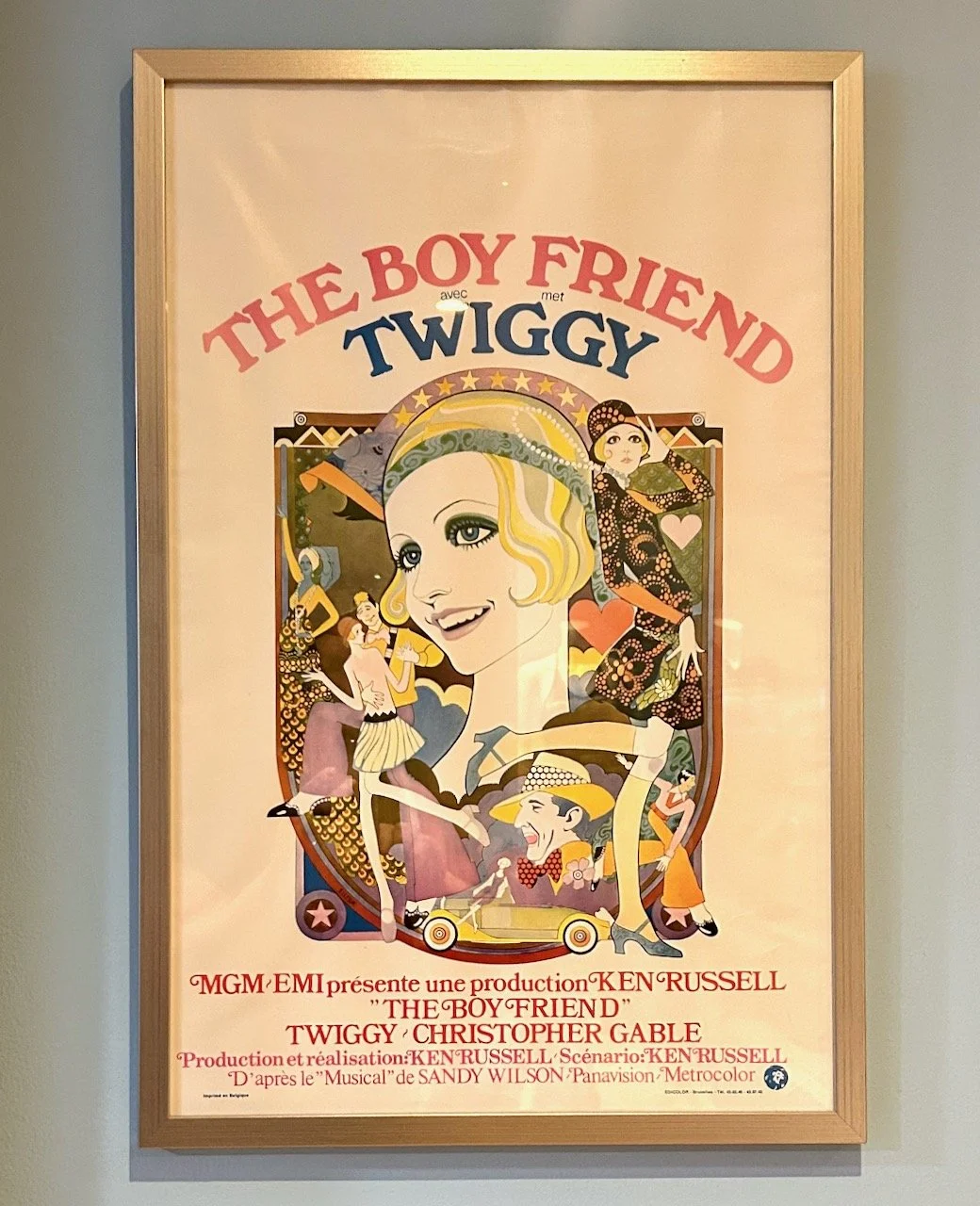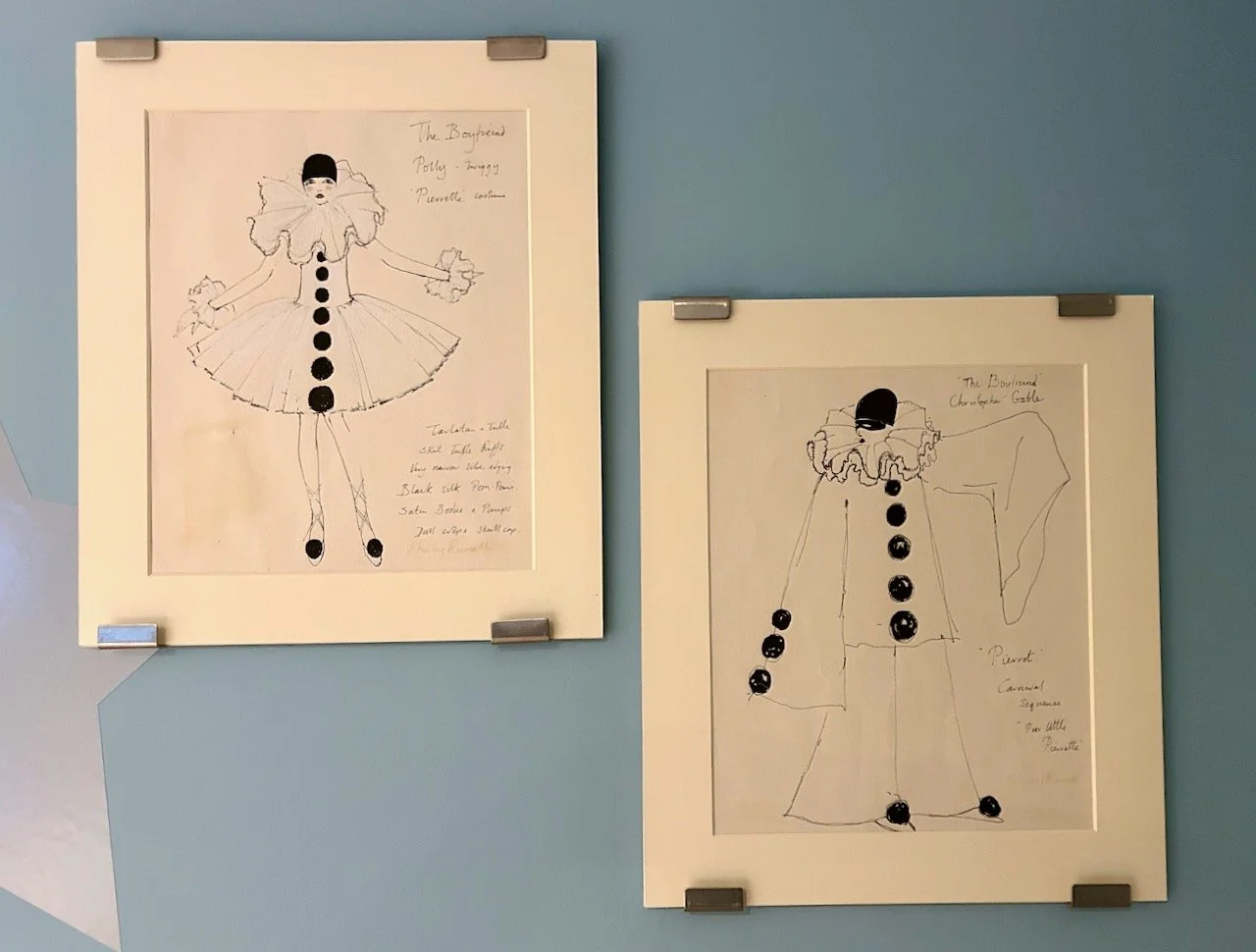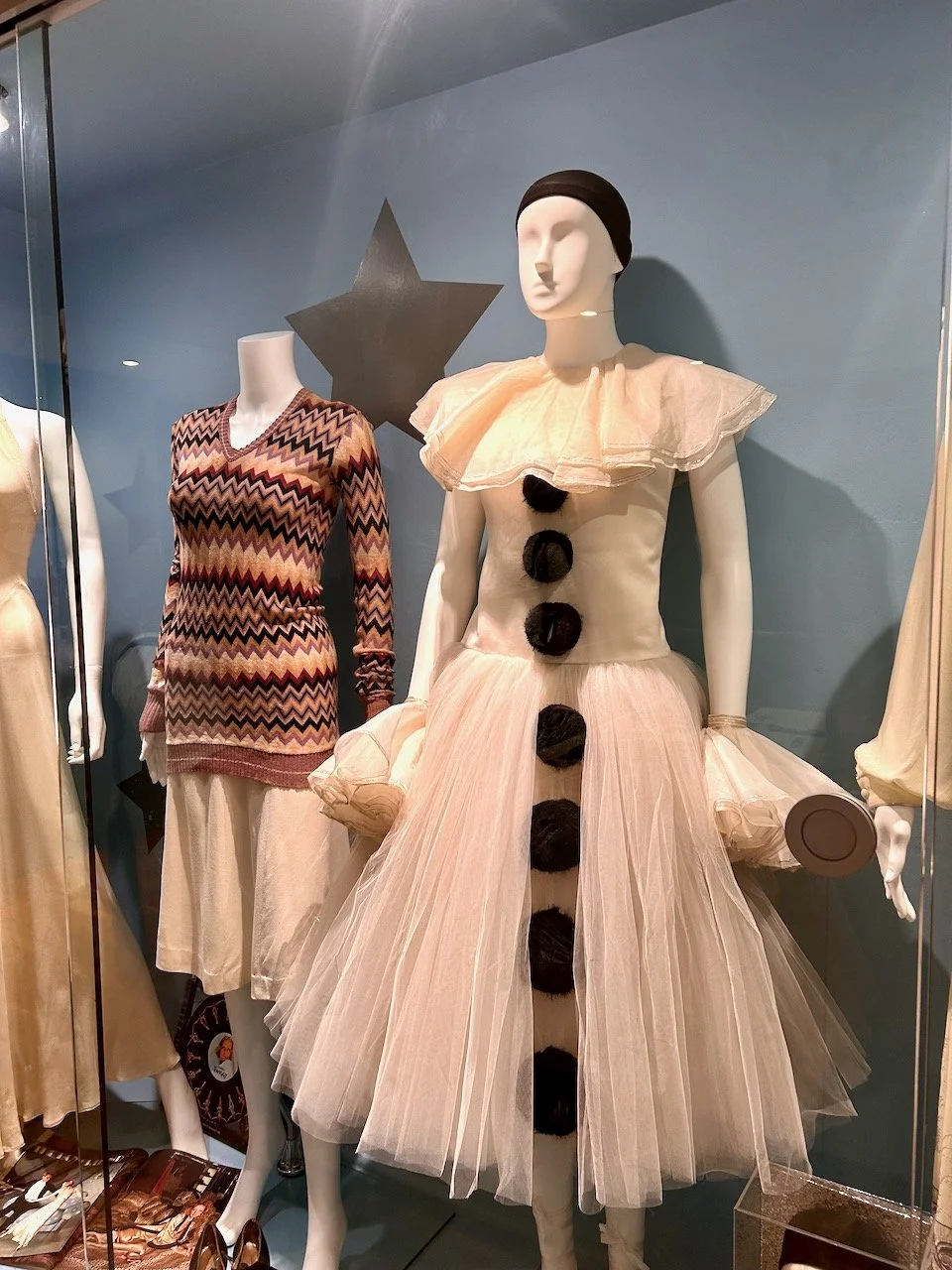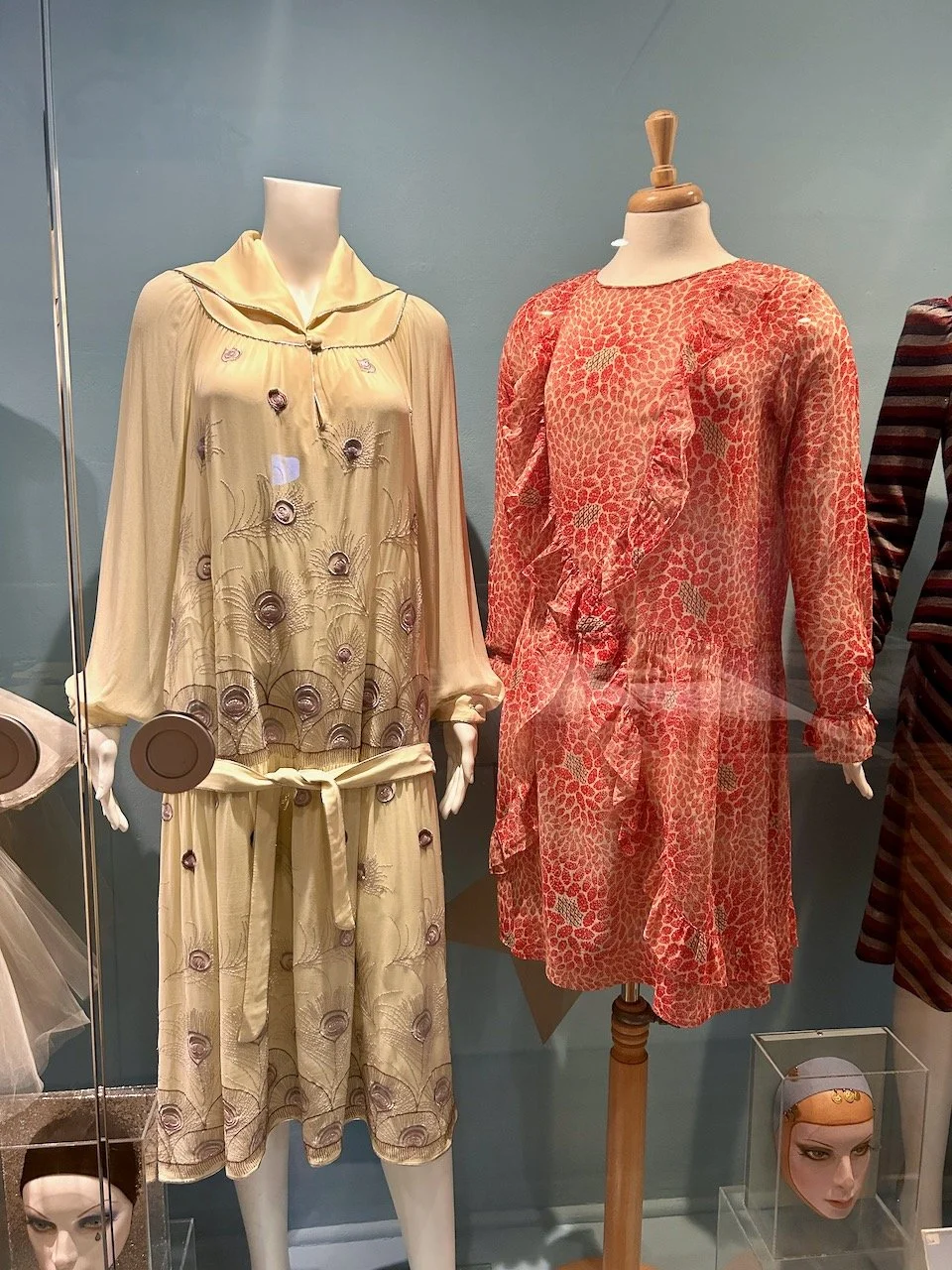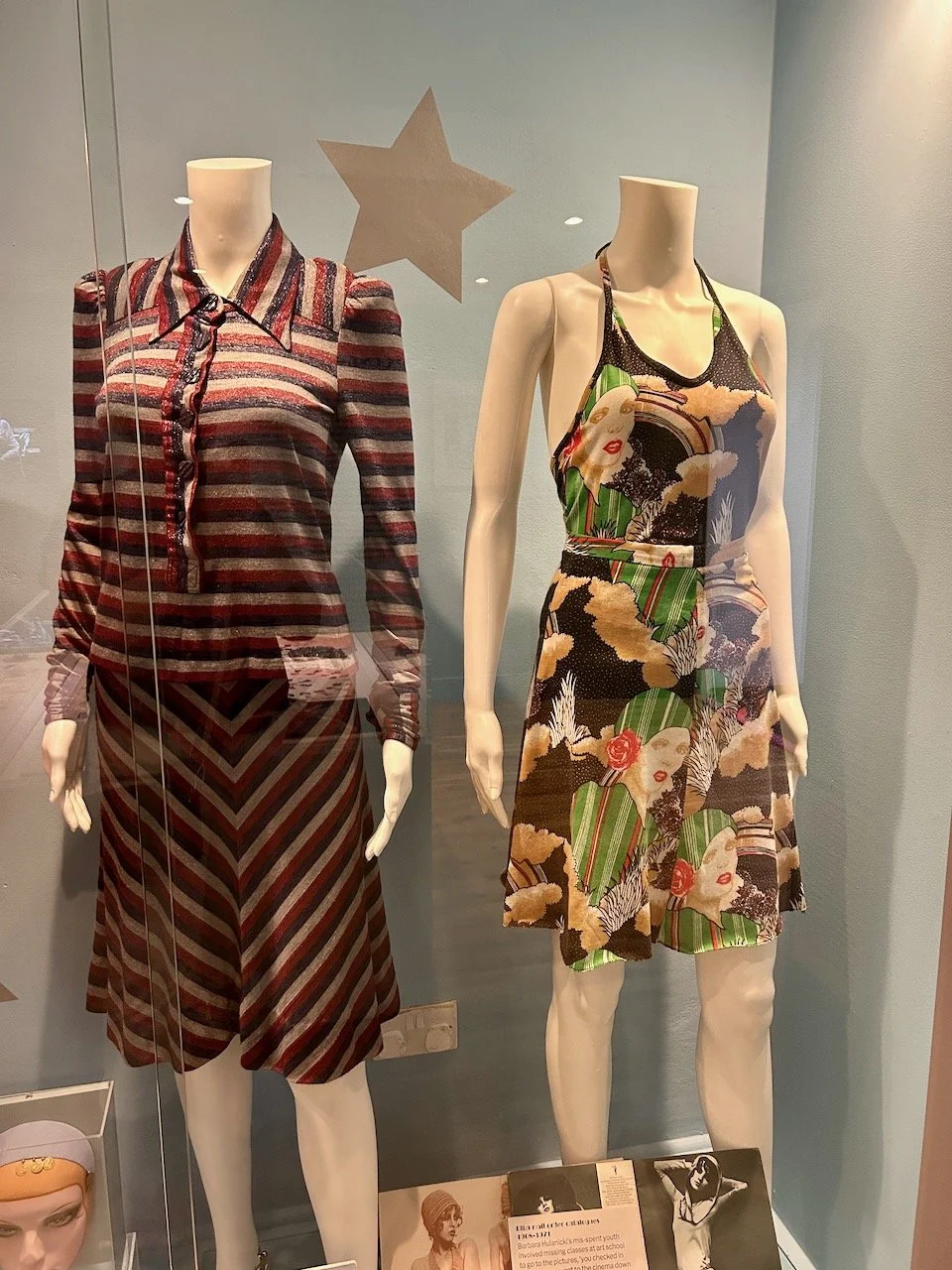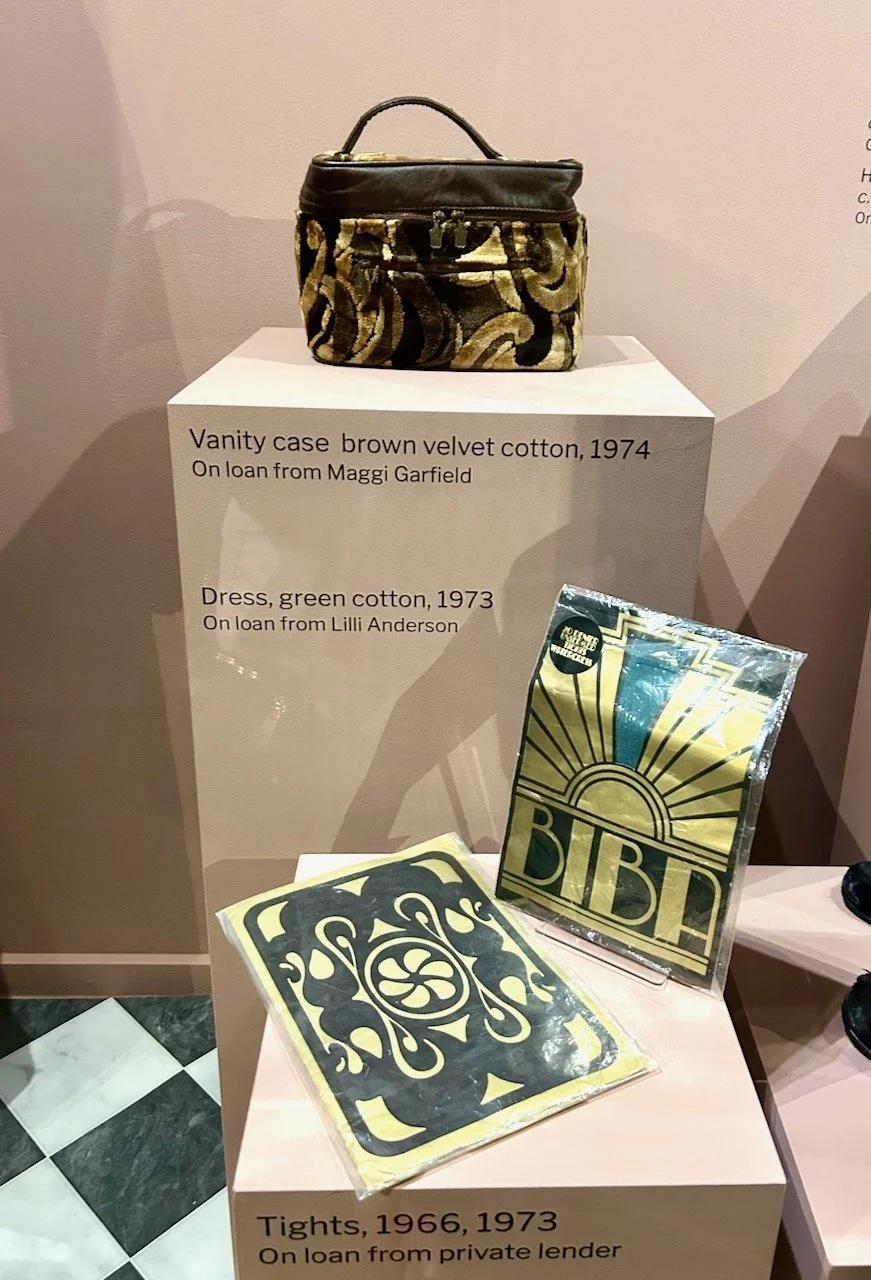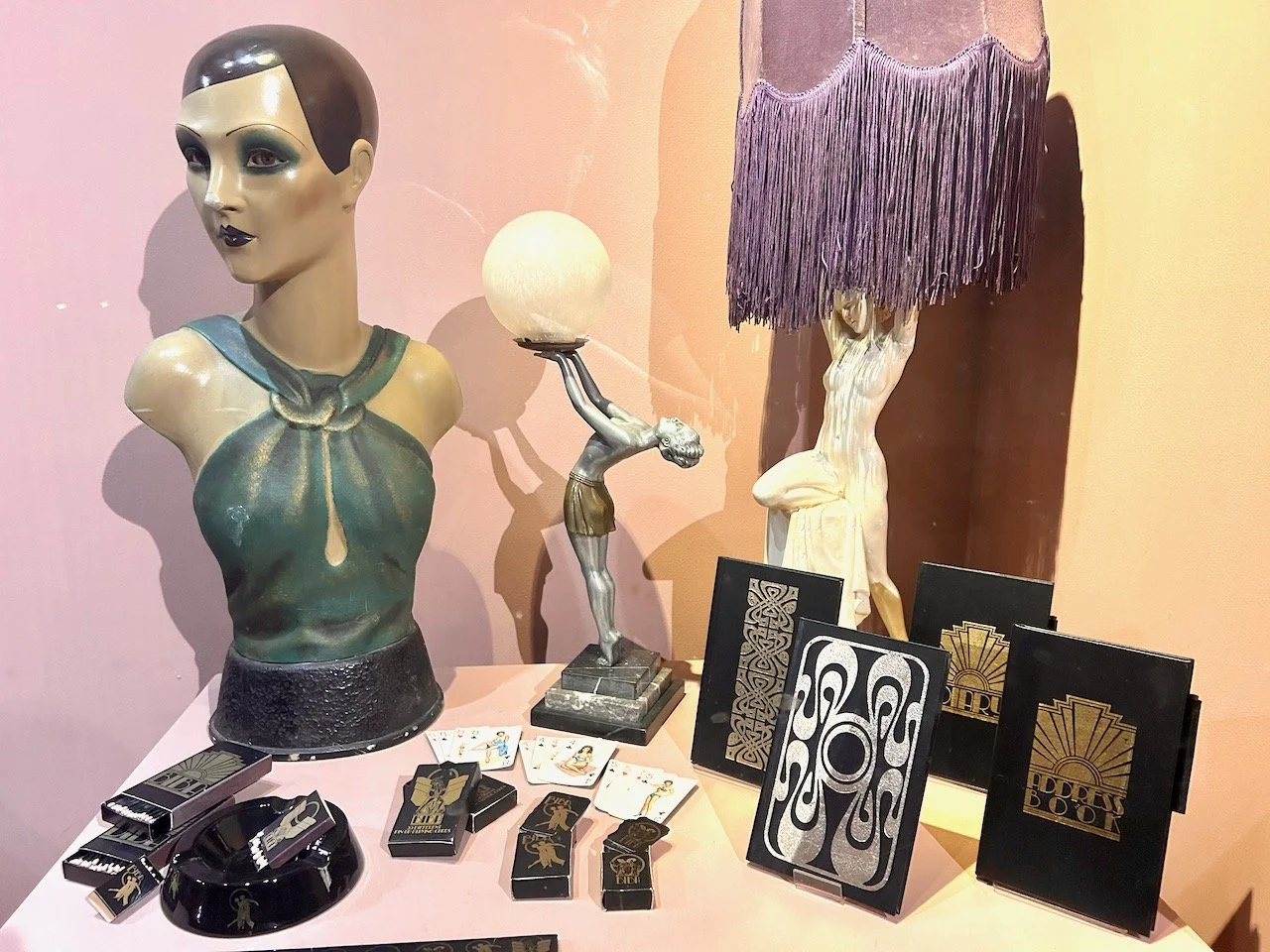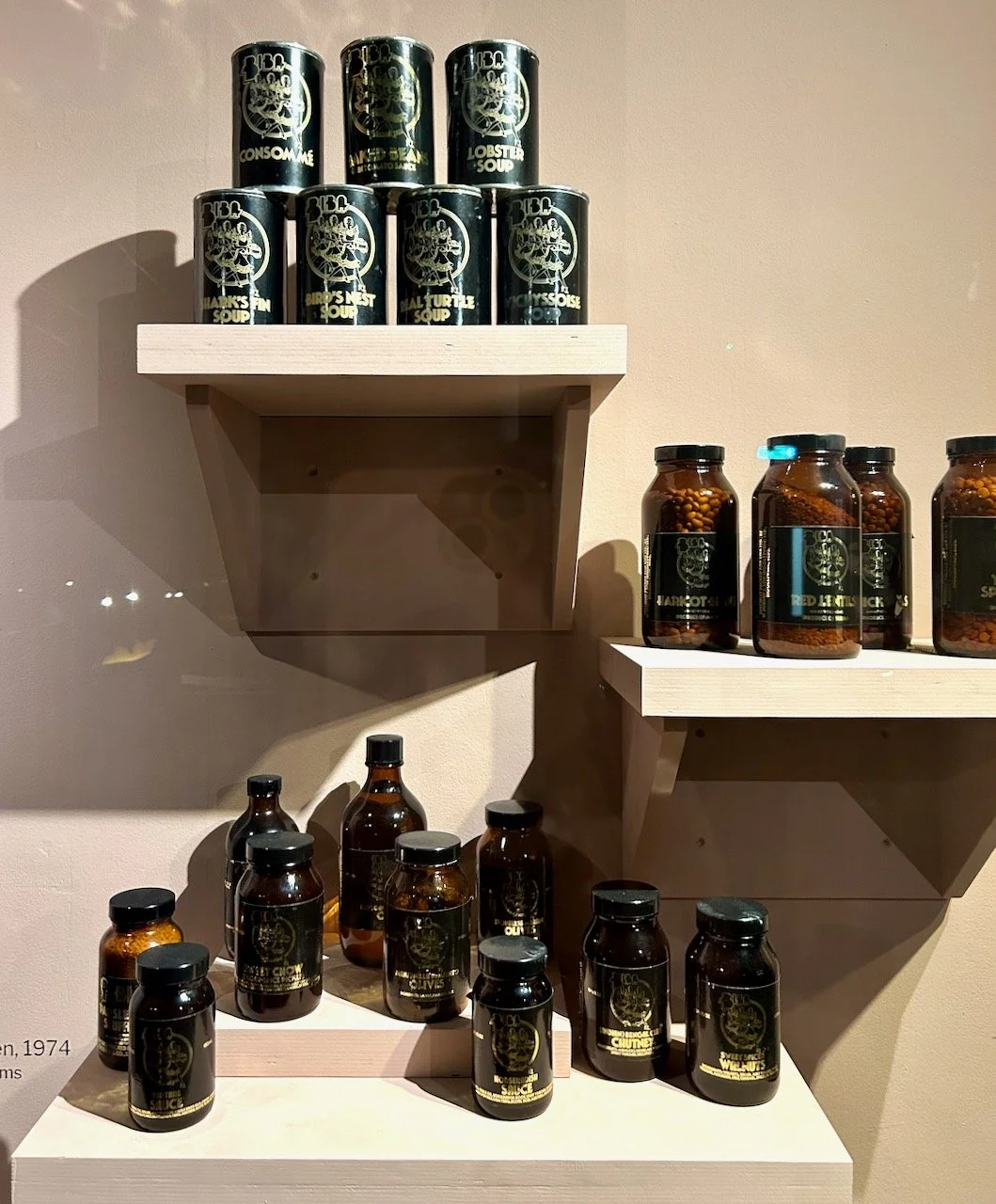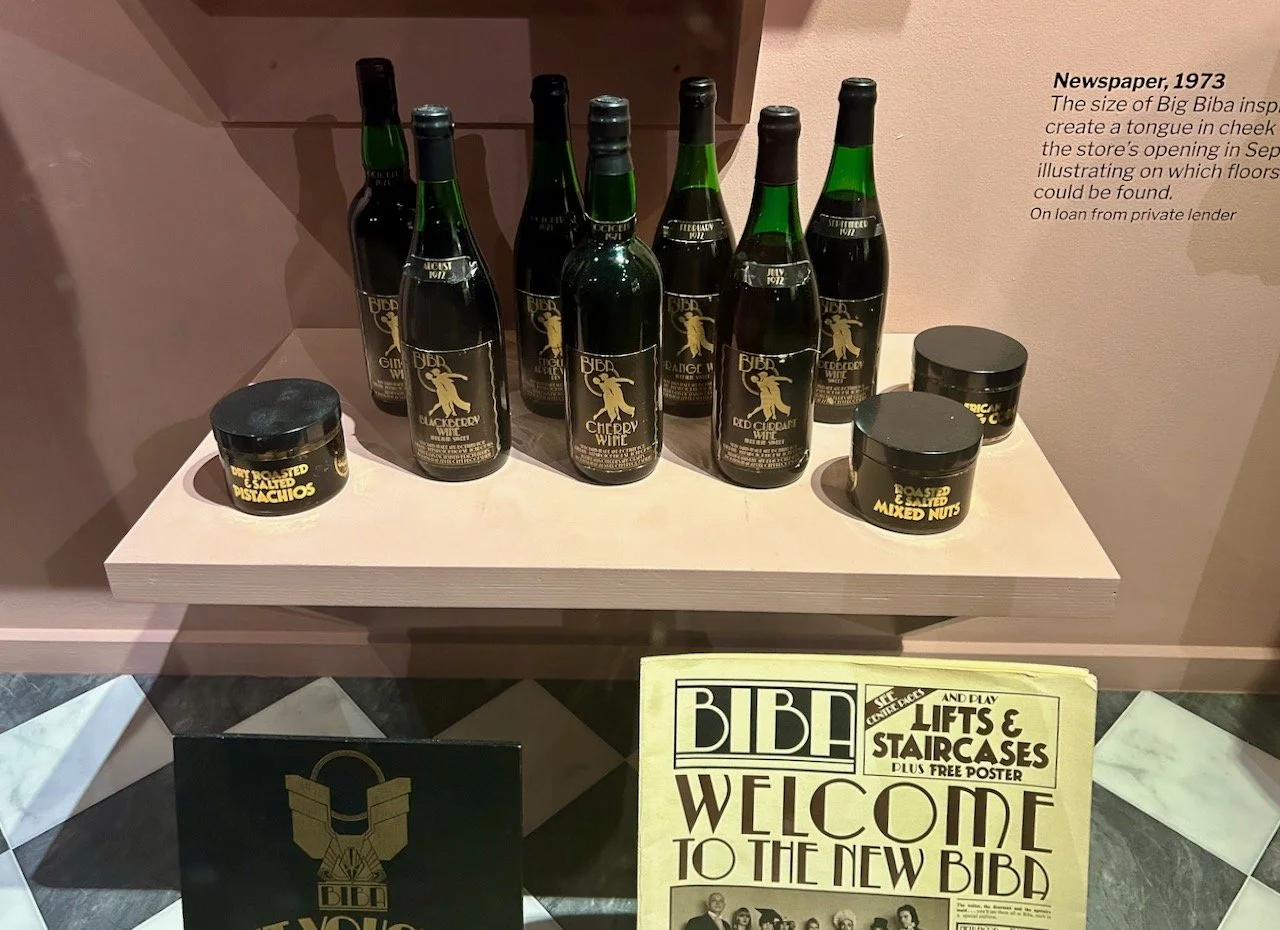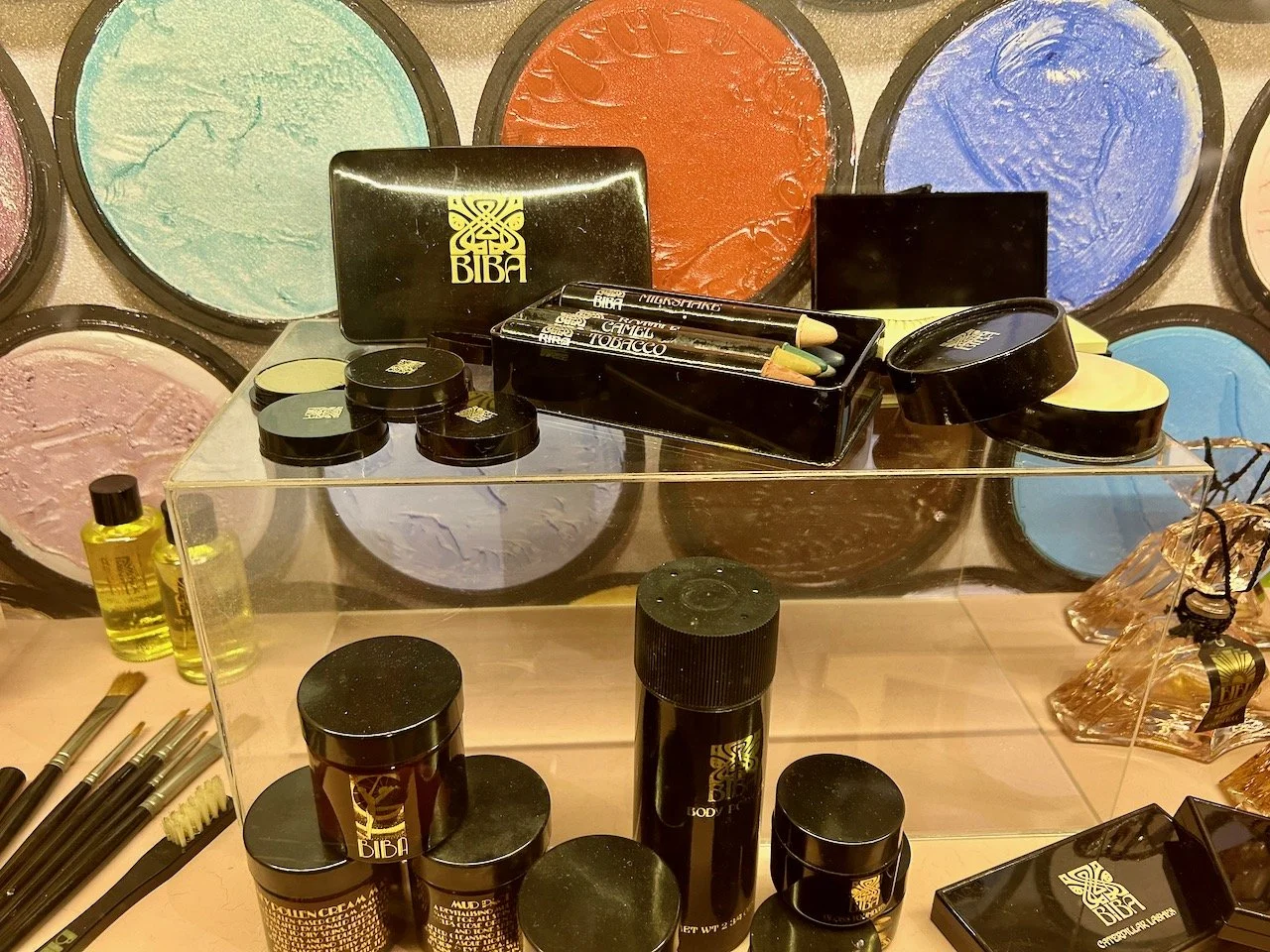It’s only recently that I’ve realised I’ve got a bit of a thing for fashion illustrations, perhaps I always have, but after sharing those from the Biba Story and then buying those Vogue pattern catalogue pages which I intend to frame, well that’s confirmed it for me.
It won’t be a surprise then that I’ve some more to share, this time from the mini exhibition of The Boy Friend which was on at the Fashion and Textile Museum when we visited last summer.
These illustrations look to have more of a collage approach to them - the skimpy outfit above with treble clef motifs on the triangular-bikini like top, show this - though the headdress looks to be larger than the skirt, but maybe that’s a perspective thing, not just me showing my age!
The red outfit on the left below looks to have the text ‘The Boyfriend - Hortense - Barbara Windsor’ in the top right corner, which is intriguing. Hortense was the maid, and it’s only now that I’ve googled it, the part was played by Barbara Windsor, who would have been 34 in 1971.
The sophisticated white trouser suit top right in the photo above, was one of Twiggy’s outfits as the main character Polly Broome. They take wide legged trousers, and flares to a whole new level don’t they?!
Shirley Russell had a fondness for the 1920s, so The Boy Friend must have been the ideal project for her. Twiggy shared Shirley’s love of the era and often joined the Russells for film shows to watch Fred Astaire and Ginger Rogers pictures. She also accompanied Shirley on trips to source original costumes, learning more about the costume history of the period, and started collecting clothes from the period too. I wonder if she still has them?
These last two illustrations are the pixie outfits for Twiggy as Polly Browne and Christopher Gable as Tony (the two main characters), though I’m not sure where these featured, as I’m sure in the finale fancy dress ball they were dressed as Pierrot and Pierrette, I need to find out more clearly!
But these illustrations reminded me of my part in the chorus, for the fancy dress ball I was the jester - thankfully there are no photos I’m willing to share, but my outfit, complete with jester hat with bells on, made in what I remember as itchy brown and mustard material, which also thankfully no longer exists!
Memories that may well have remained well and truly buried had they not been reawakened by these illustrations - I’ll let them off though, it was great to see these illustrations!

